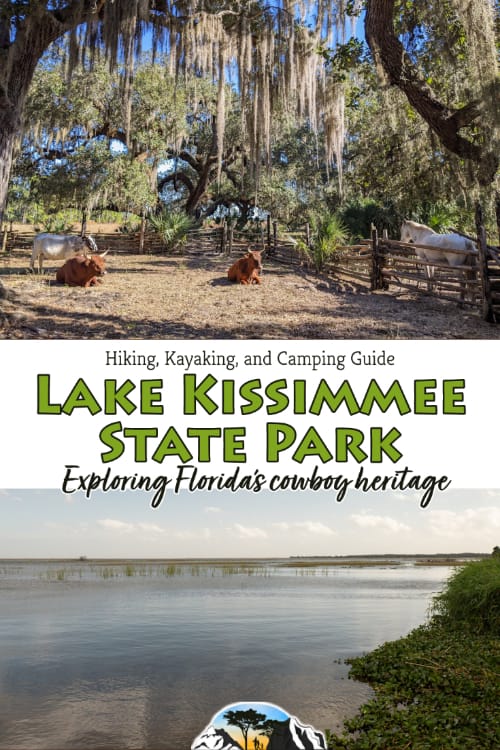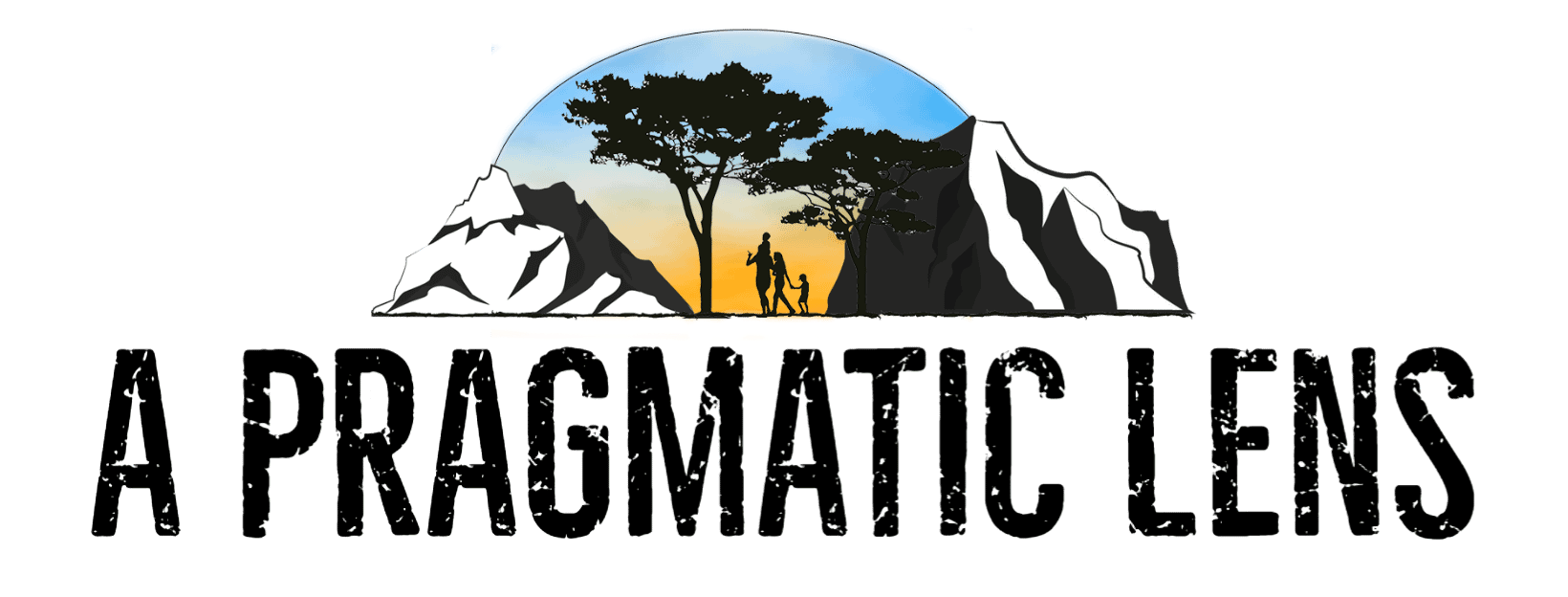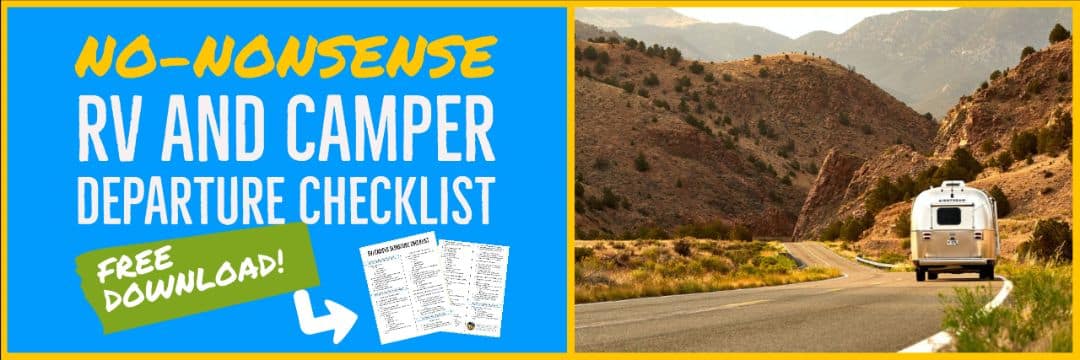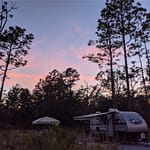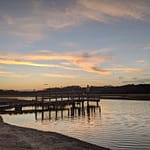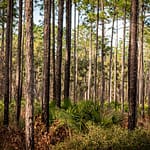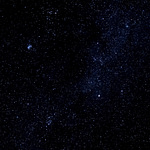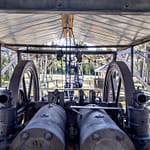Visiting Florida State Parks is usually all about camping, hikes, and simply enjoying the natural wonders that Florida has to offer. Lake Kissimmee State Park goes beyond this premise to create an unforgettable experience. In this article, we will explore the best activities to do in, as well as information about camping in Lake Kissimmee State Park.
This post may contain affiliate links. Visit the Disclaimer page for more information.
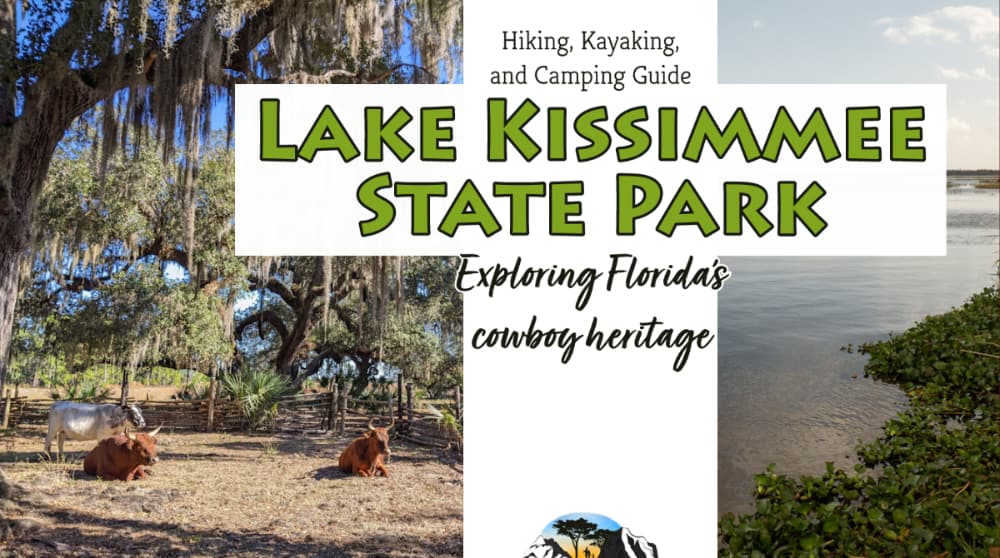
Things to do at Lake Kissimmee State Park
Cow Camp
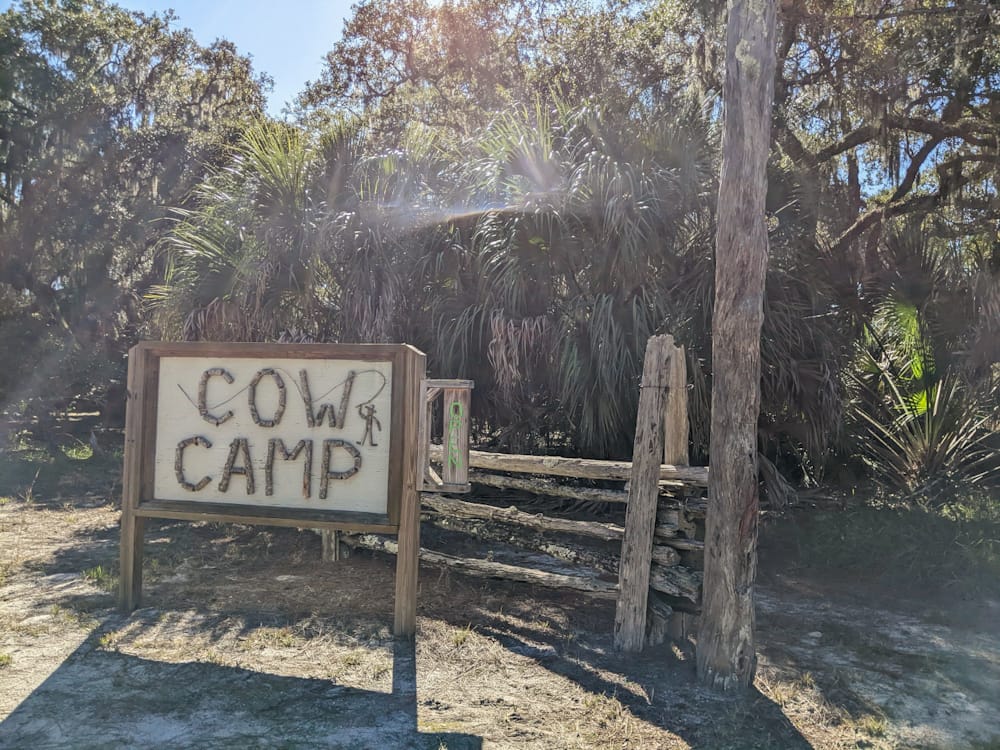
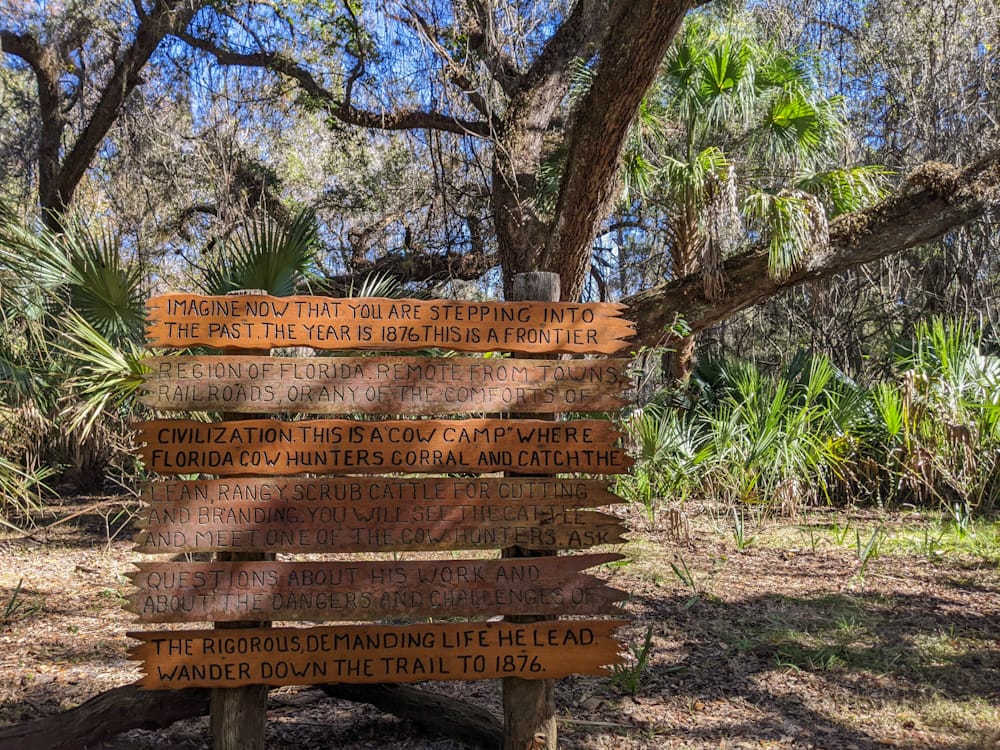
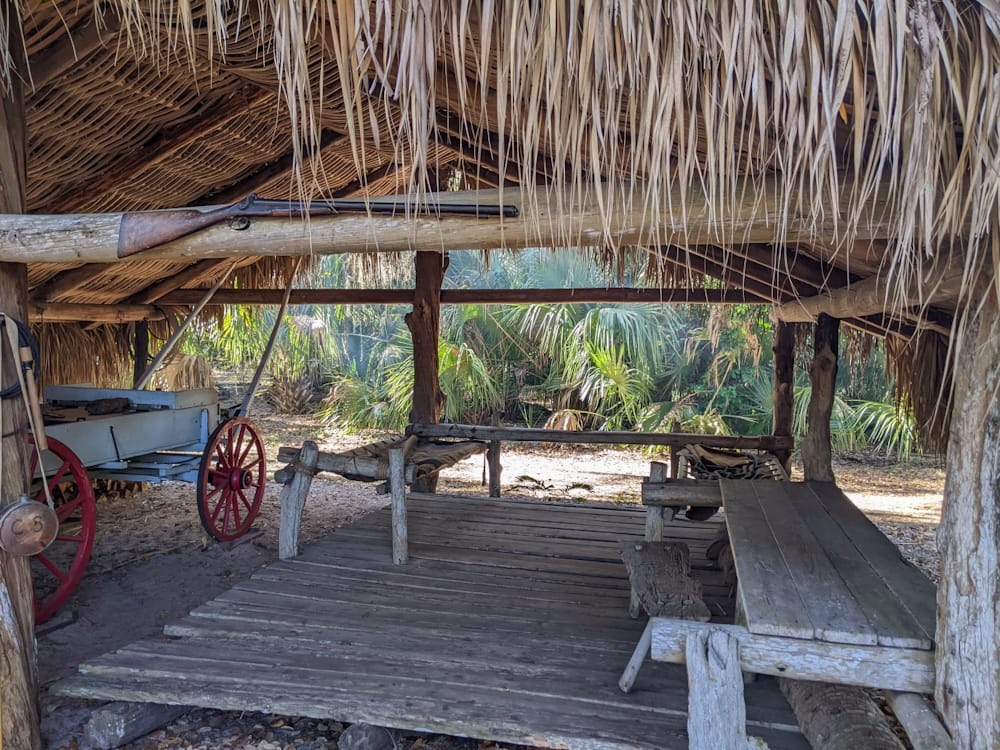
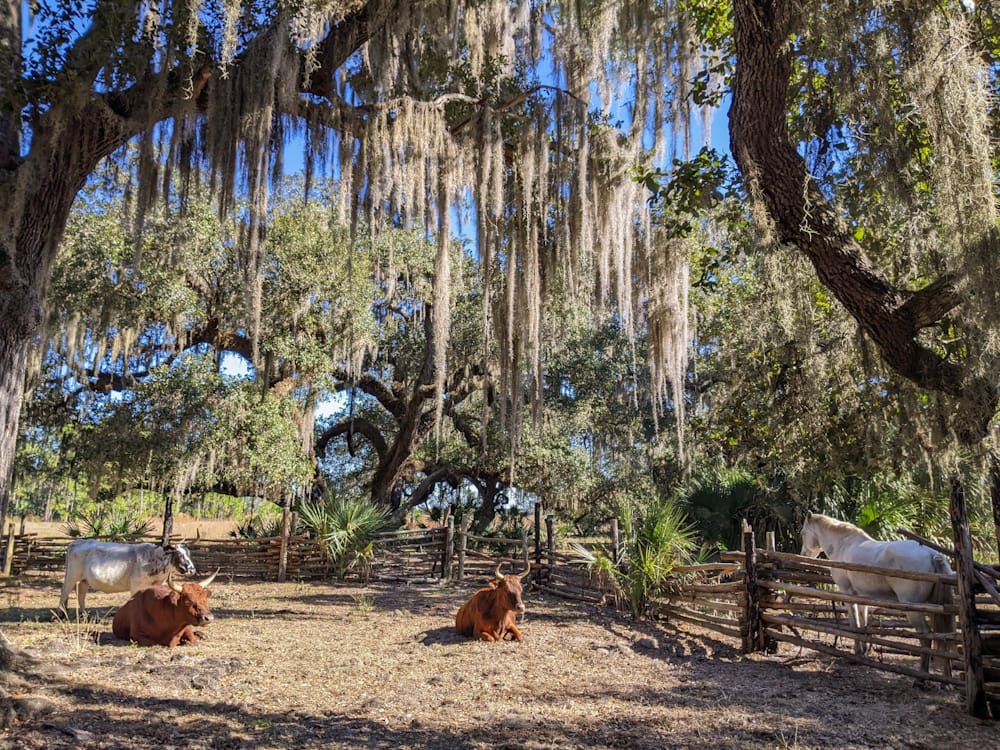
My expectations weren’t high for this attraction, and in essence, it is fairly straightforward. It is sheltered by tall, shady live oaks at the edge of a prairie. There is an outpost that mimics the camps cowboys used to round up cattle for ranches.
At the camp, you will see sleeping cots and a wagon with food and cooking supplies to show how cowboys traveled. Those of us who use campers will find this to be an interesting parallel to contemporary camping trailers.
Additionally, there are cows and, at least when we were there, a very sweet horse that we spent a great deal of time petting. It was fun to see a cowboy there to answer questions from us and other curious visitors. He even took the children with him to help him fill out the cows’ trough with water.
Even though there isn’t much else to it, it was still quite enjoyable. This place has a long history, and the children thoroughly enjoyed seeing it brought to life for them. Though we camp a lot, we do not often see these kinds of activities, at least not in state parks. This is yet another example of the unique charm that makes Lake Kissimmee State Park so distinct.
If learning about history is of interest to you, make sure you also add Collier Seminole State Park, Tomoka State Park, and Fort Clinch State Park to your Florida bucket list!
Hiking Trails
Below you will find the trail map that is provided upon arrival at the park, in addition to some general information about each trail. When possible, I included a link to the AllTrails hike information.
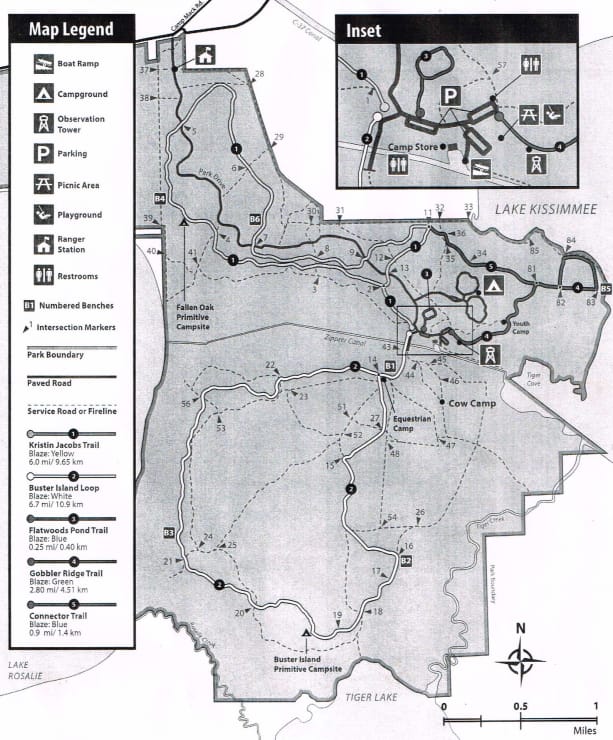
Kristin Jacobs Trail (Yellow; 6.0mi)

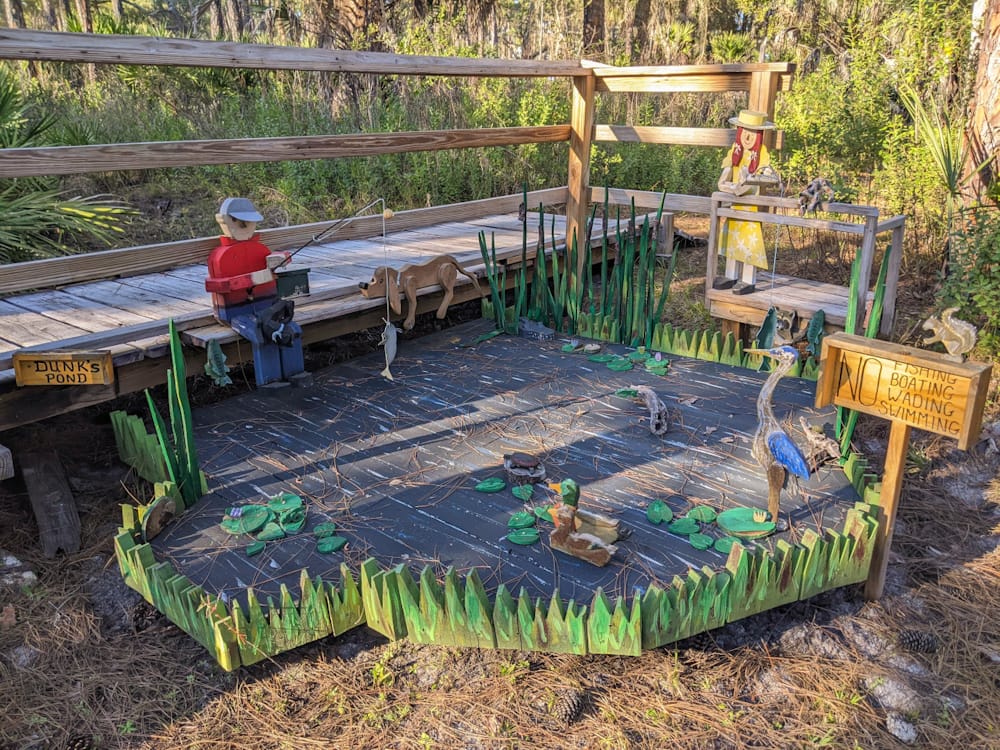
Also known as the Lake Kissimmee North Loop, this trail starts at a parking lot near the campstore and ends after about 14 miles with a loop that totals 6 miles. It passes through a variety of habitats, including oak hammocks, scrubland, as well as pine flatwoods. A level trail with blazes of yellow paint marks the way, and the dirt is well-packed.
The main park road crosses this trail four different times, so you can pick and choose which sections to explore. There is a nice wooden sculpture which is located at the intersection marker 9, depicting a man fishing in a pond. In the pond, you can see small figurines of alligators and wading birds.
Buster Island Loop (White; 6.7mi)
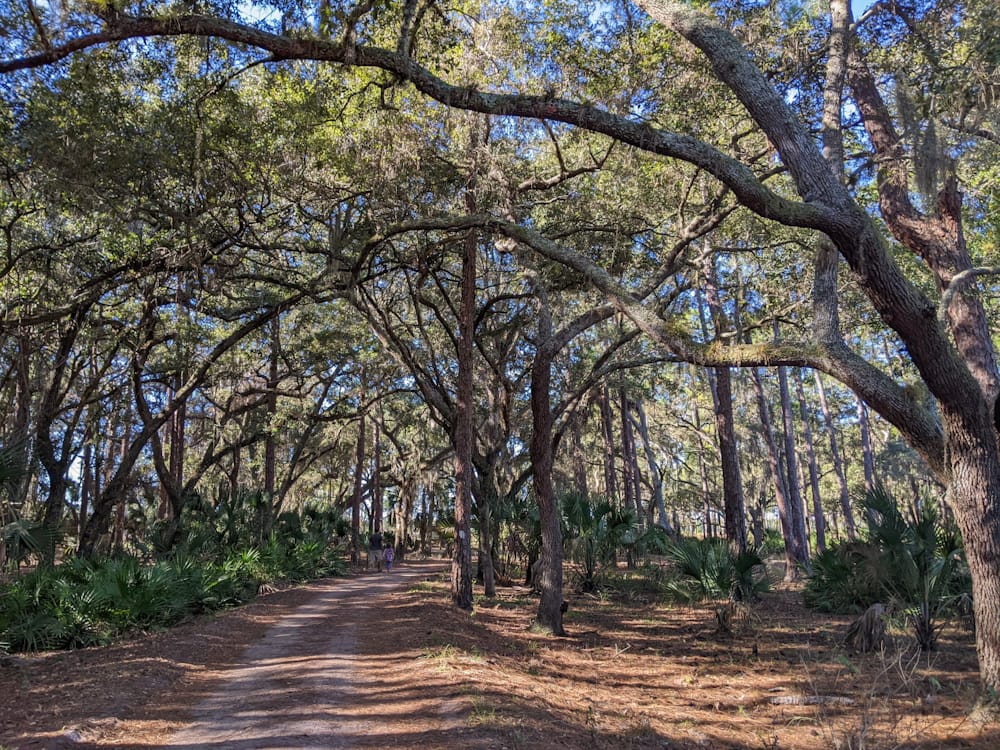
The trailhead is located next to the Kristin Jacobs Trail. After crossing the wooden bridge over the Zipprer canal, you will continue south, where you will find a trail split that will take you on the full 6.7-mile hike loop. Although we did not complete this trail, we found the part of it before we got to the equestrian camp to be shady and comfortable, covered with a canopy of oak trees. The loop passes through oak hammocks at its western and southern ends, where it is shaded a bit by the trees.
Buster Island Primitive Campground, which is a perfect overnight camping option for those looking for an overnight backpacking trip, is located on the southern edge of the loop. As the eastern edge of the loop travels through an open canopy and over an open prairie, it’s a good idea to bring sunscreen and plenty of water.
Flatwoods Pond Trail (Blue; 0.25mi)
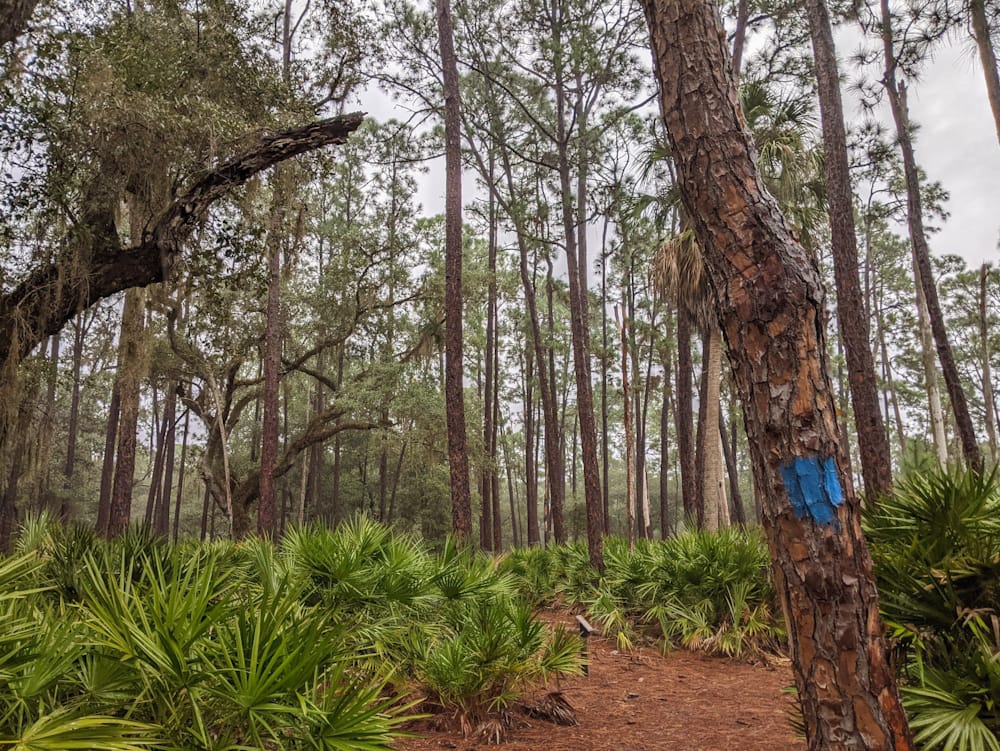
It is an easy walk of about 0.25 miles which makes it perfect for those who are just arriving at camp, or those who want to go for a quick walk just before leaving camp. There are mainly pine flatwoods on the trail, as its name suggests, over a hard-packed surface.
Gobbler Ridge Trail (Green, 2.8mi)
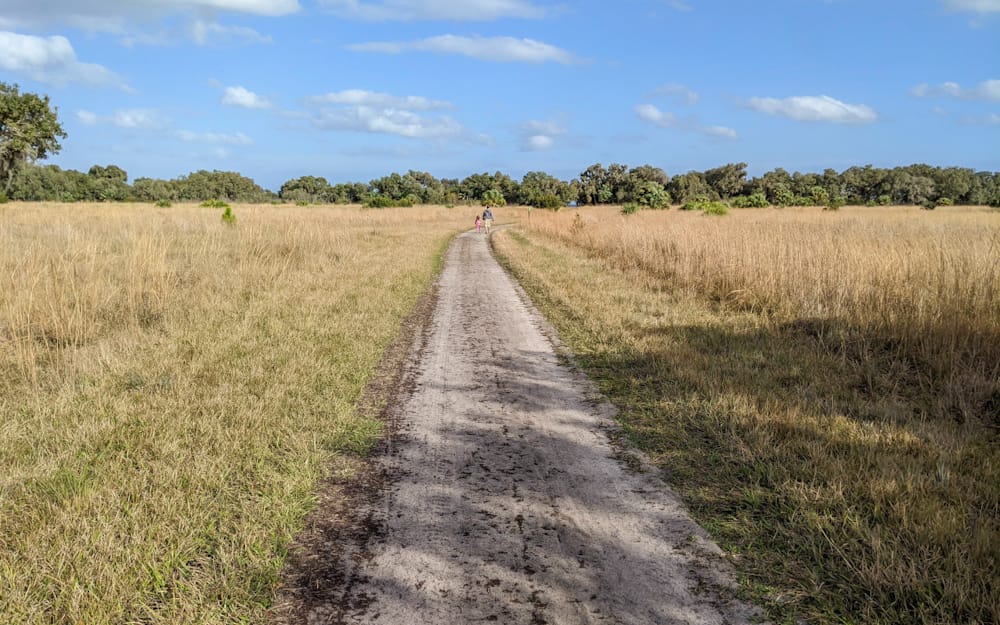
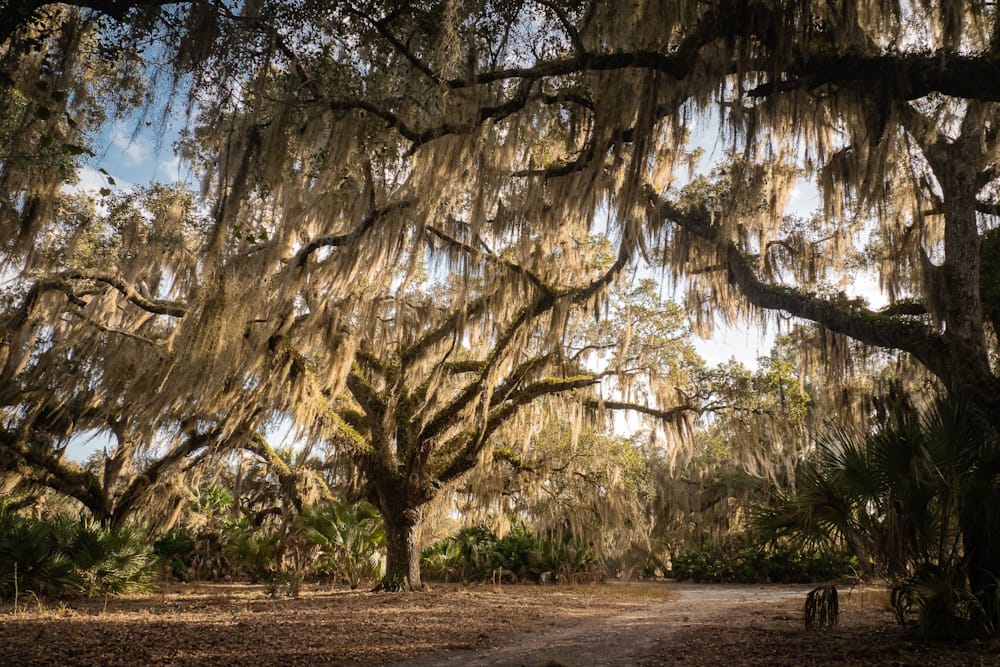
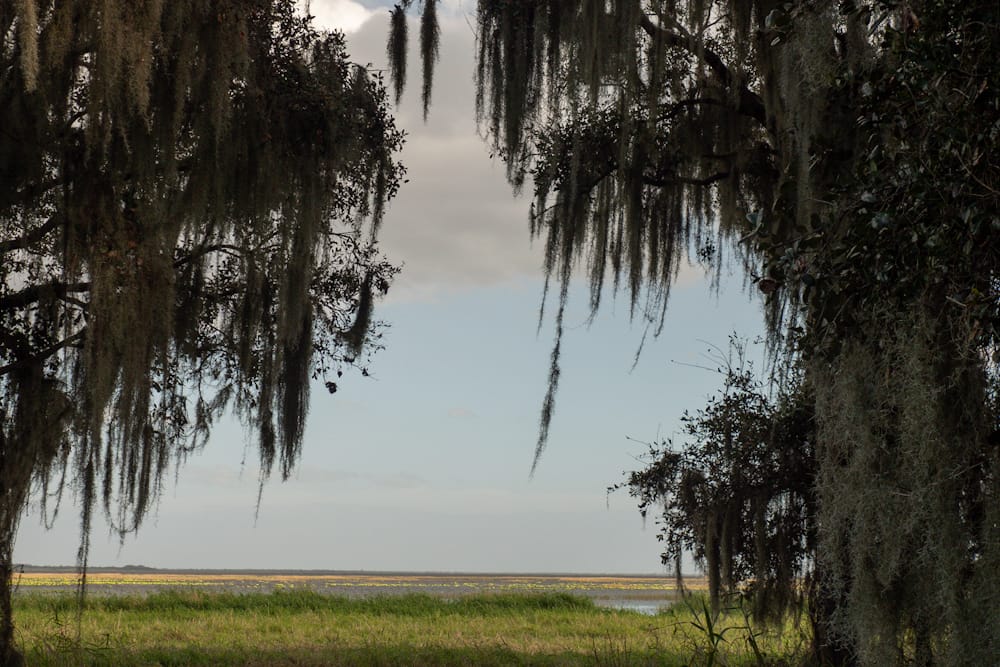
If you begin your trail from the observation tower, located near the playground, you can go northeast towards the lake along the trail. There will be a variety of different habitats that you will pass through on your way to the shores of Lake Kissimmee, including prairies and beautiful oak hammocks. In the north end, you can loop around the perimeter hugging the shore of Lake Kissimmee until you are able to lollipop back to the trail.
Biking
Aside from the main road, there are no trails in this park, but the shady, long, and winding road is great for biking. You’ll have an enjoyable time biking if you take advantage of this feature. Due to the number of turns on the road, cars usually travel at a slow speed on the street. Please be careful as I mentioned earlier; cars may be unable to see you coming around all of these turns!
Glamping
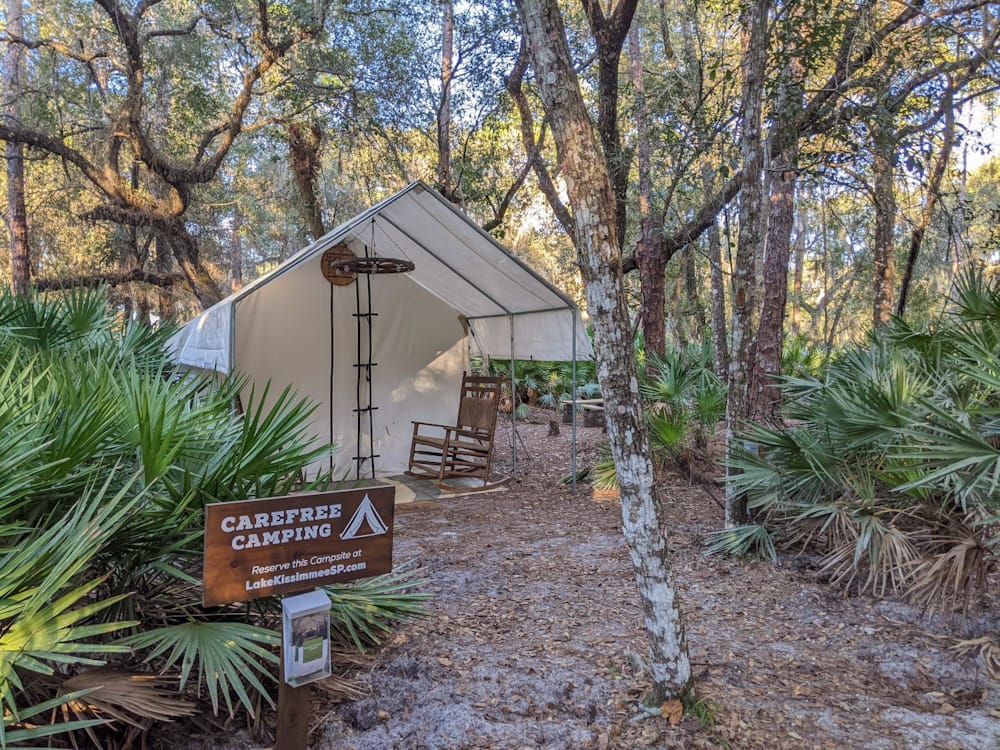
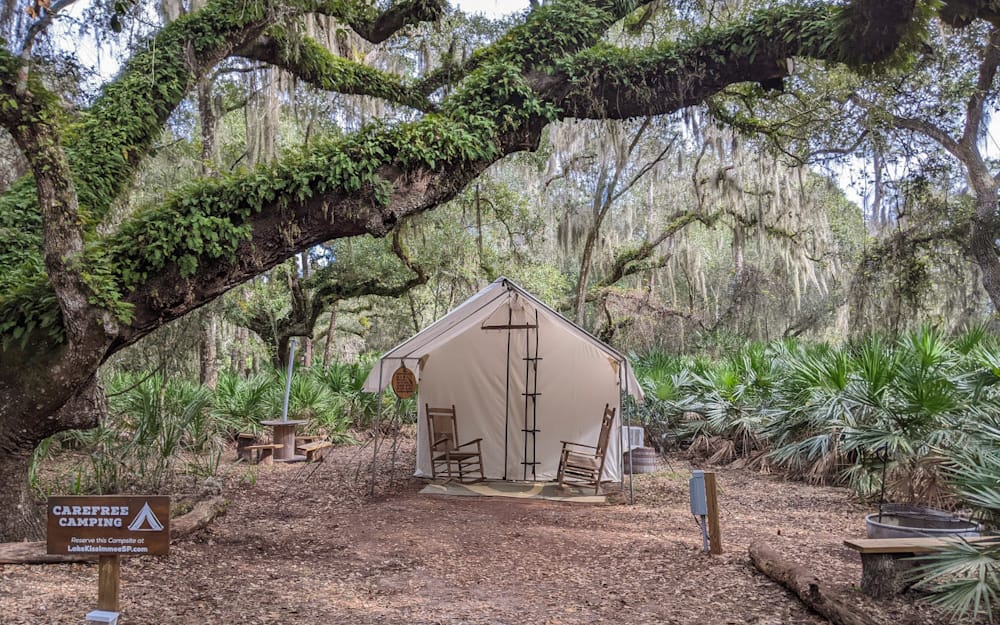
Do you not have a tent or a camper? That is no problem at all! In each loop, there are two canvas tent sites available for glamping. They are located near the restrooms and come with a comfortable bed, linens, and even a climate control system! In addition to the fire ring and benches, there is a picnic table and bench at each of the sites. These sites may be a bit more expensive than a regular tent site, but they offer a convenient and enjoyable way to explore the park.
Kayaking
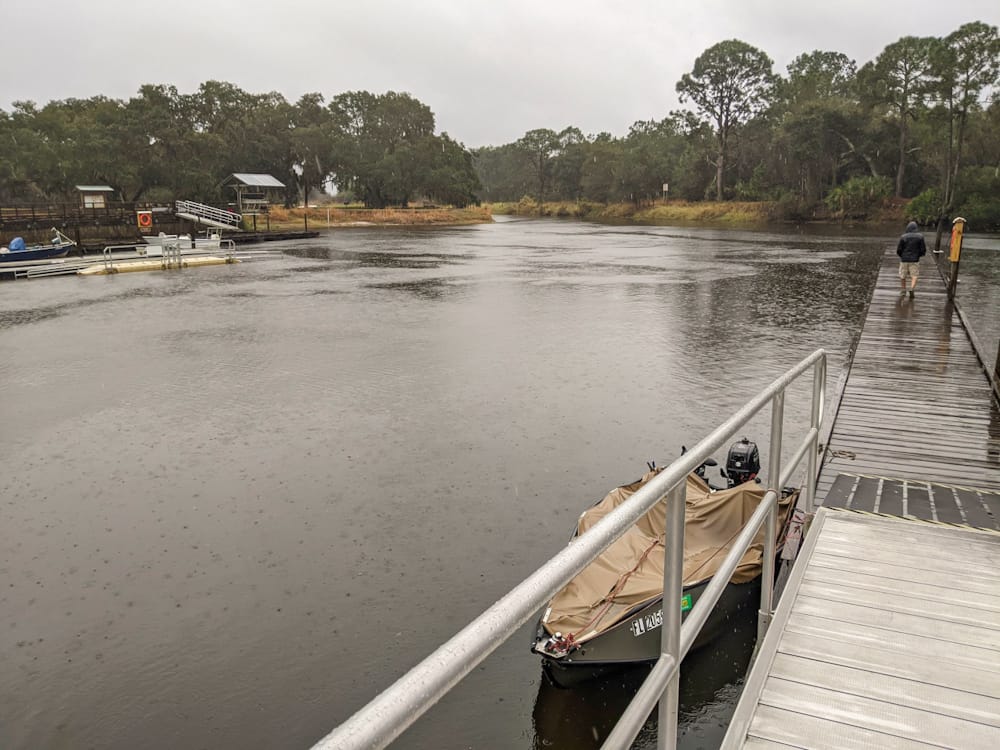
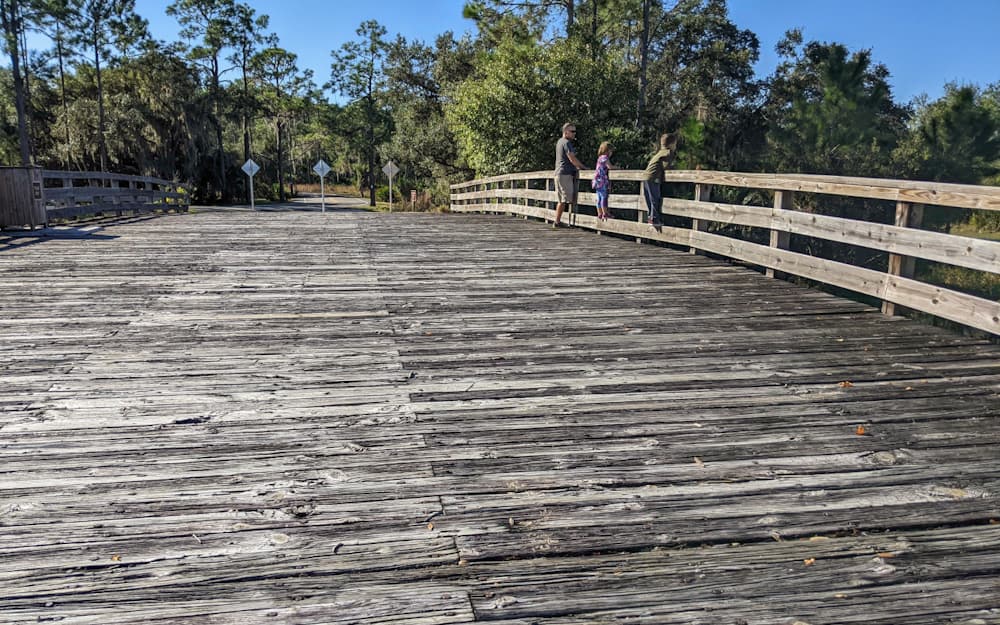
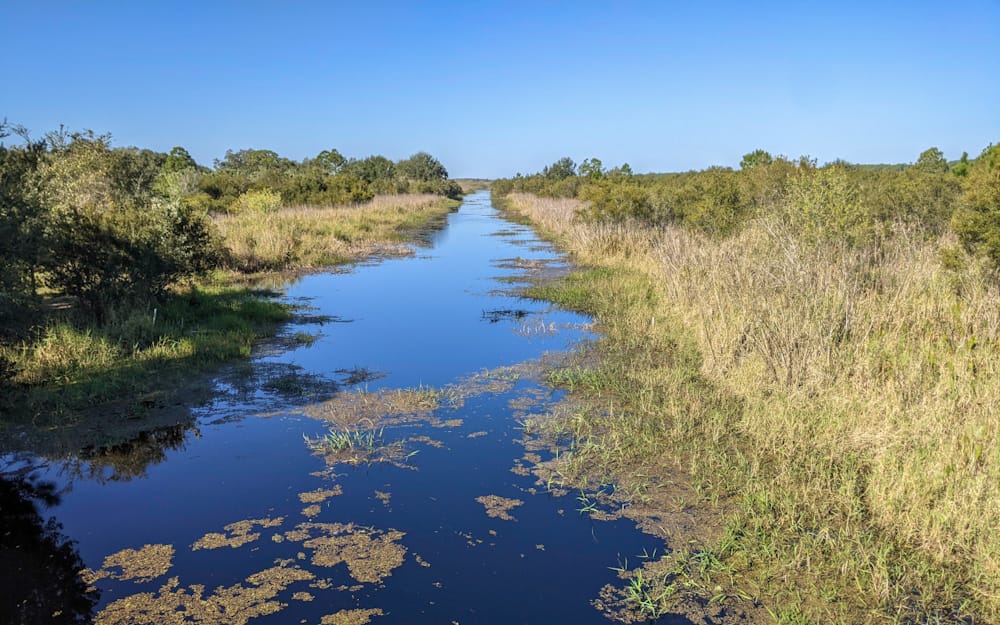
Lake Kissimmee State Park is the place to go for a nice, long paddle day. You can launch your kayak or canoe from the marina near the store, and then take the canal that takes you out to Lake Kissimmee from there. Simply paddle around the lake, or try the 11-mile loop around Buster Island if you’re feeling adventurous.
(Refer to the hiking map shared above to find all the locations mentioned next.
When you’re ready to do the loop, you can either launch in the marina next to the store or near cow camp. From there, you can either take the Zipprer canal east toward Lake Kissimmee, or west toward Lake Rosalie. Rosalie Creek is the connection between Lake Rosalie and Lake Tiger. Likewise, Tiger Creek is the link between Kissimme Lake and Lake Tiger. Both Rosalie Creek and Tiger Creek are mostly calm water, winding their way through marshes, offering lots of opportunities for bird watching and wildlife viewing.
Do keep in mind that no matter which lake you choose to paddle to, whether it is Lake Kissimmee or Lake Rosalie, this is not a trail for the faint of heart. Not only is the distance long, but also the weather conditions can make paddling around the lakes quite challenging when there is strong wind blowing. Remember that even though you may find yourself under shady canopies in certain areas, you will still be exposed to the sun for the most part. Make sure you stay hydrated throughout the day and that you reapply sunscreen as needed.
Playground and Day Use Area
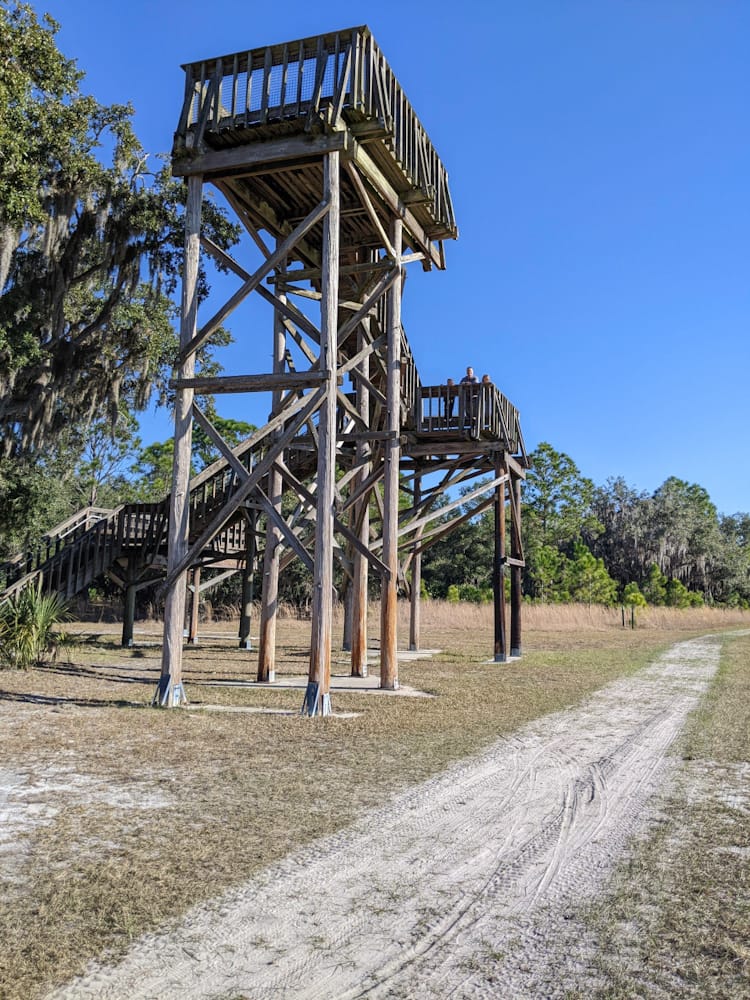
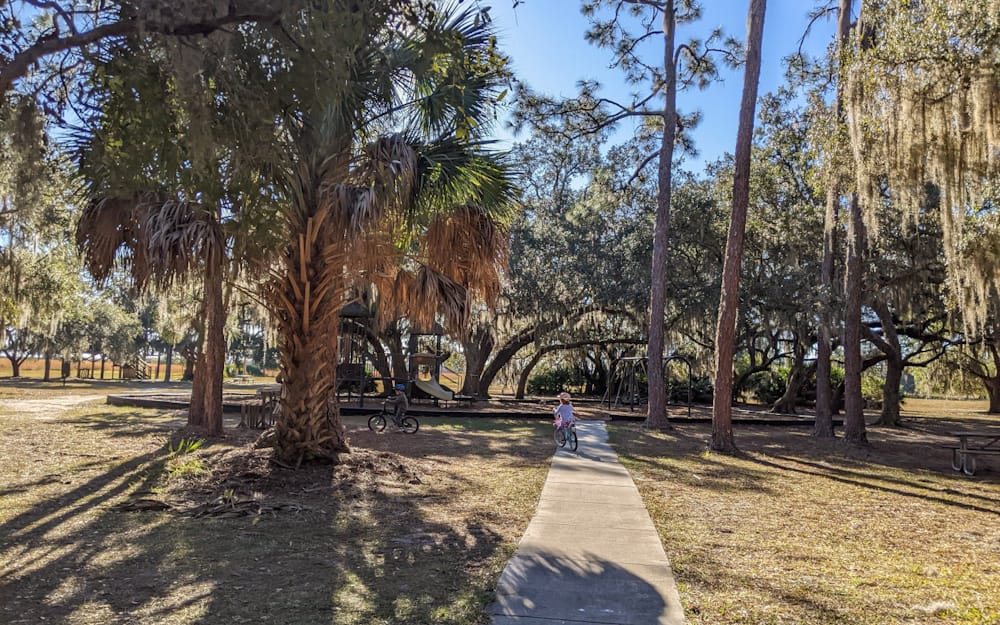
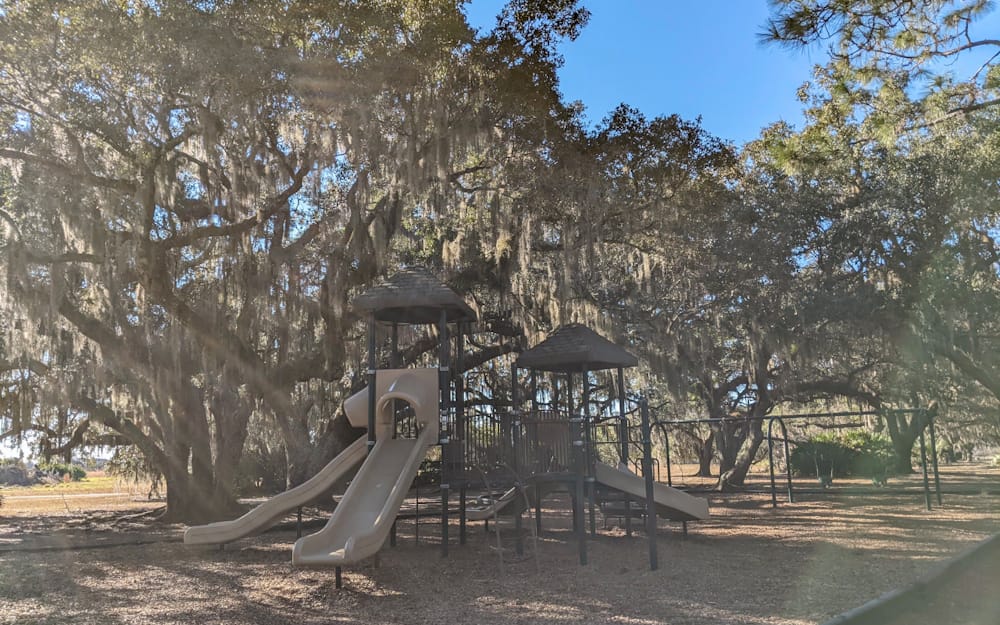
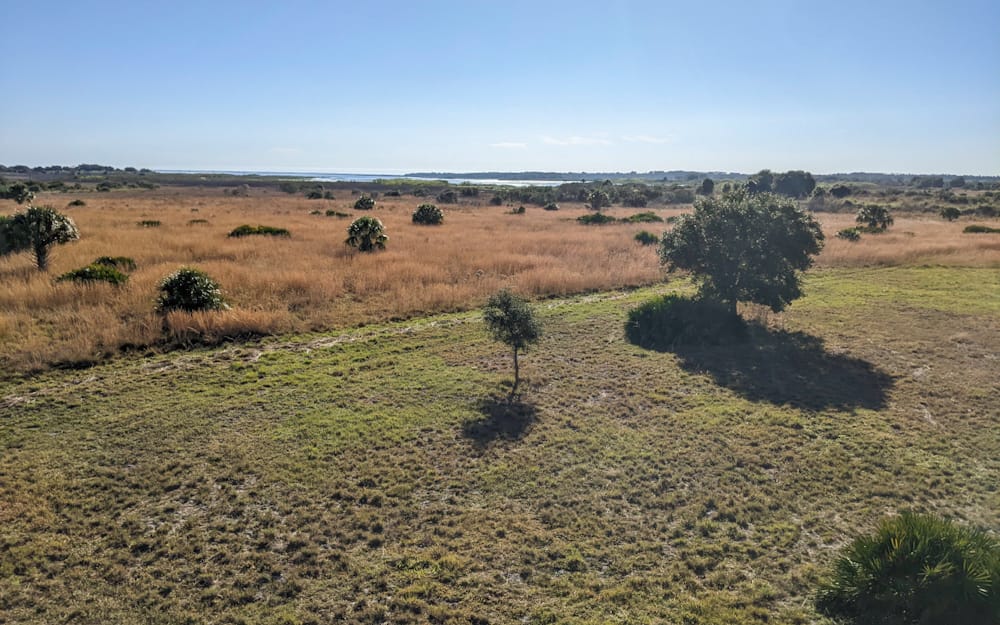
There is a playground in the day-use area that is in excellent condition, and there are several large live oak trees surrounding it that provide plenty of shade. A wheelchair-friendly swing is even available within the playground.
Camping at Lake Kissimmee State Park
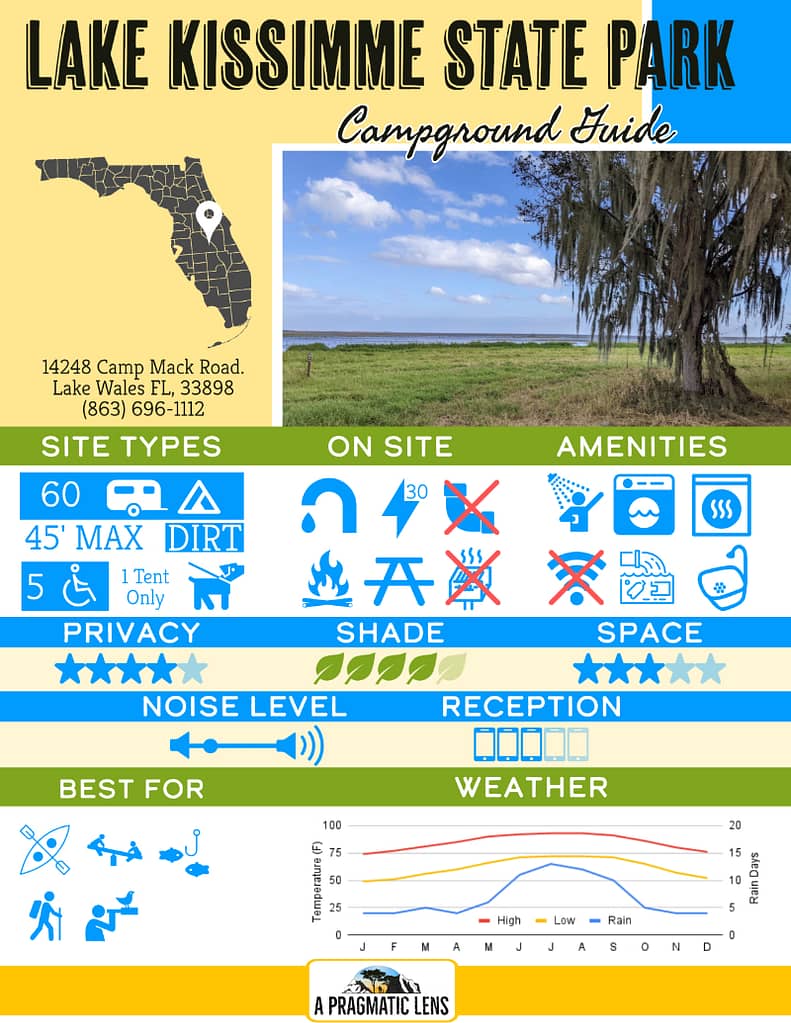
Feel free to use the code below to share this infographic on your website! Please include attribution to A Pragmatic Lens with this graphic.
<a href='https://apragmaticlens.com/lake-kissimmee-state-park/'><img src='https://ml0cur3zhy5j.i.optimole.com/w:auto/h:auto/q:mauto/ig:avif/f:best/https://apragmaticlens.com/wp-content/uploads/2022/07/Lake-Kissimmee-State-Park-Info-1.jpg' alt='Lake Kissimmee State Park Campground Guide' width='800px' /></a></p>Directions and Arrival
The drive to Lake Kissimmee State Park can be a bit tricky depending on where you are coming from. Though the directions are easy to follow, the roads are very narrow and winding. Our trailer was a 21-foot travel trailer and we had no major trouble towing it, but I can see how some of the roads may be problematic for larger rigs. I would recommend having a GPS that you can use to decide which roads are suitable for your type of trailer.
- Address: 14248 Camp Mack Road. Lake Wales FL, 33898.
- Phone: (863) 696-1112
As soon as you arrive, the process of checking in is quite simple. In fact, we did not even have to go into the ranger’s office. As a matter of fact, the rangers already had our information ready. A park brochure, trail map, rule book, as well as a scavenger hunt book were provided to us so that we could conduct our search for totem poles in the park.
If arriving after hours, make sure you call the park at 863-696-1112 to get a gate code.
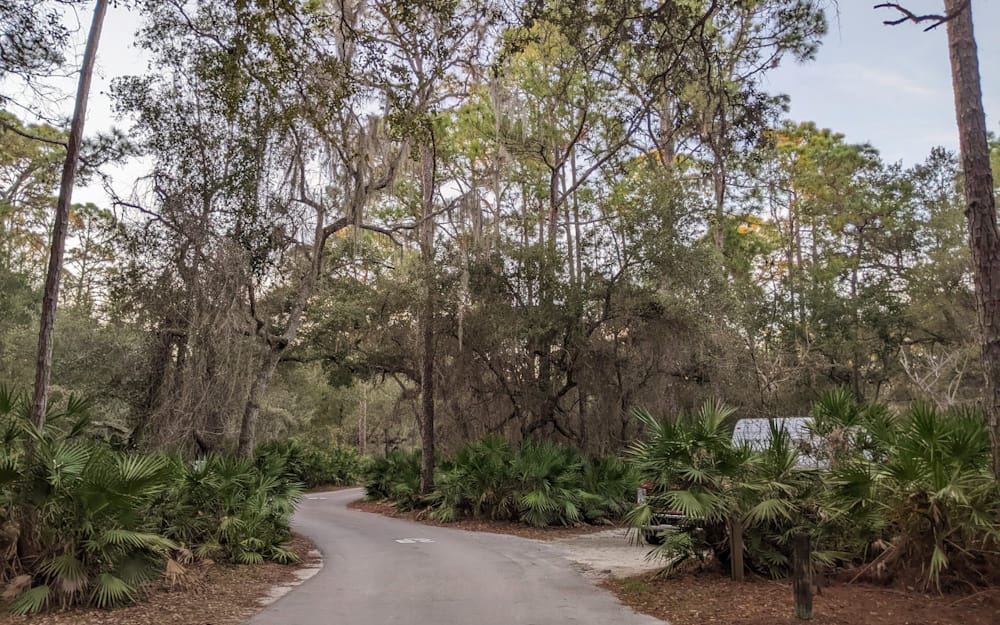
A winding road leads to the campground loop after checking in. The road is about three miles long. Since it is a shared road with golf carts and bicycles, you will need to be mindful of your speed. On the plus side, the road is in fair condition and quite scenic. The path takes you through a number of wooded areas, although I did not see any low-hanging branches that might pose a problem for tall campers.
The Campground Loops
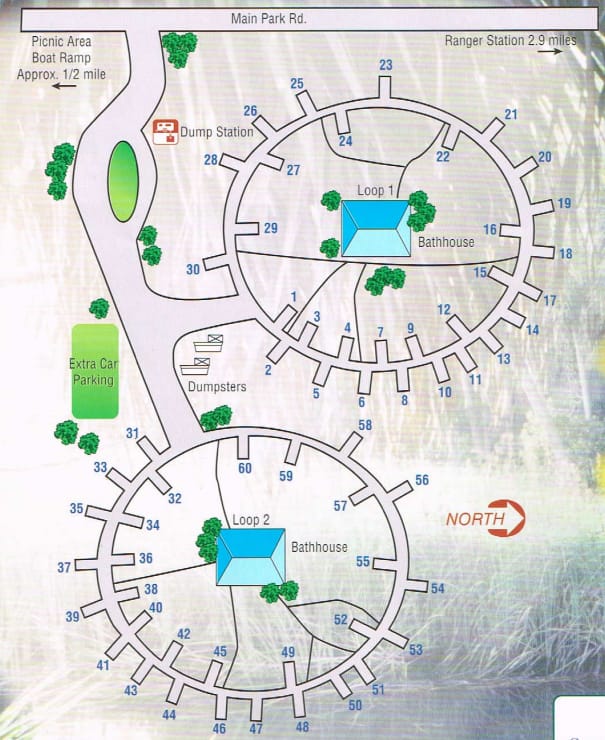
There are two loops of camping. LK 1 has 30 sites, three of which are ADA compliant. LK 2 also has 30 sites, two of which are ADA compliant. The roads are paved surfaces within each loop, though a bit narrow and winding. I thought the fact that the site numbers were painted on the ground was a really nice touch. Besides removing the guesswork, we enjoyed the fact that our kids were easily able to locate our site on their adventures whenever they went out.
About the campsites
Generally, the sites are made up of packed dirt, and they are mostly level. It is possible that you will still need to level your camper if you have one. A substantial amount of shade can be found at most sites, as well as a lot of natural vegetation. In addition to this, most of these sites have been well laid out and are somewhat convenient for backing in. The fact that each site was laid out well, made for a high level of privacy between the sites.
There are water and electricity hookups at all of the sites. In addition to the two water spigots, the pressure of the water is adequate.
Best and Worst Sites
It is difficult to make a mistake when choosing a site in this campground, as there are many options to choose from. Most of them are quite nice and well-kept. Our accommodation was in site 22, a rather spacious, shady, and private site. Furthermore, I found a couple of sites that stood out, and a couple of others I would steer clear of.
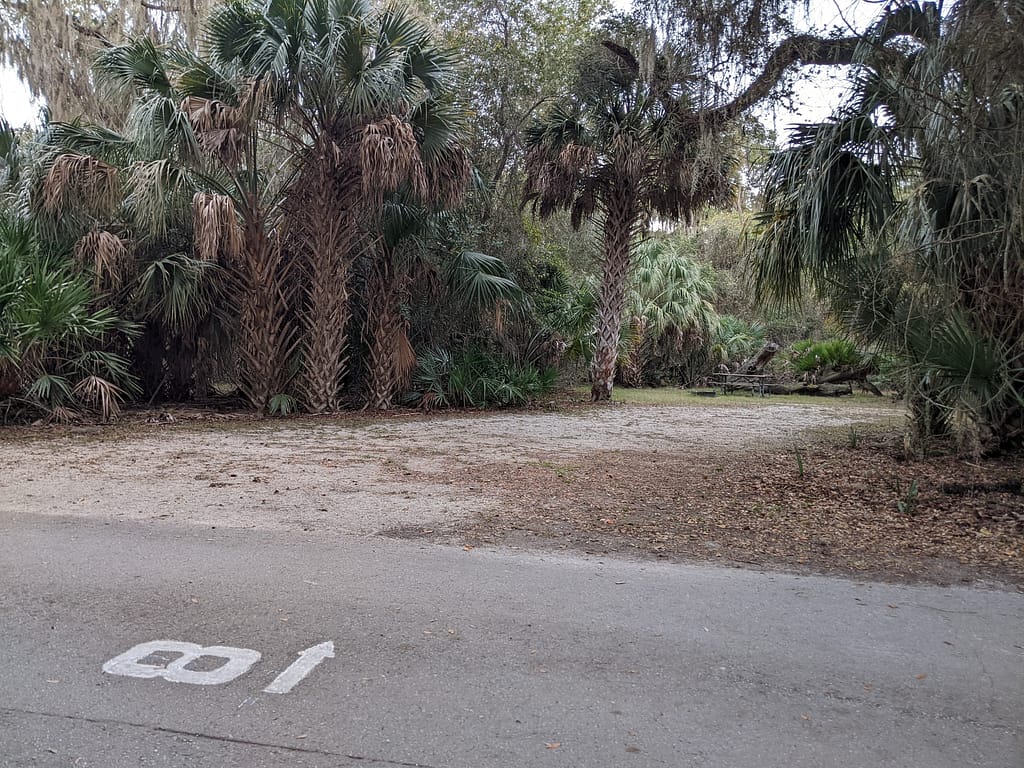
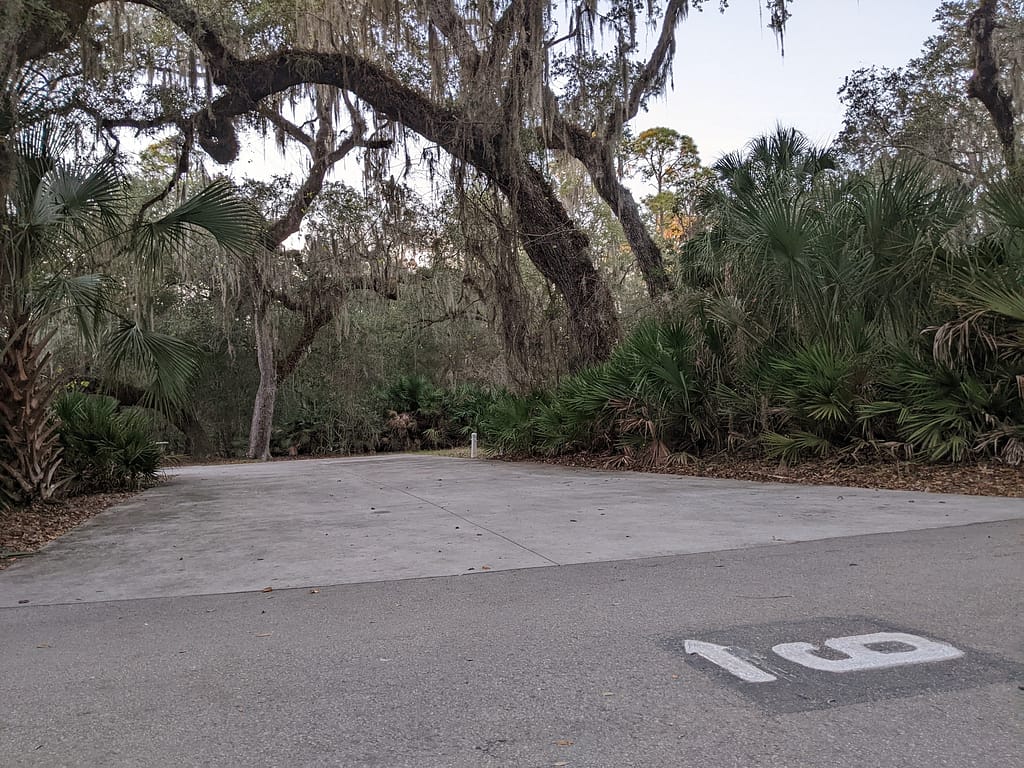
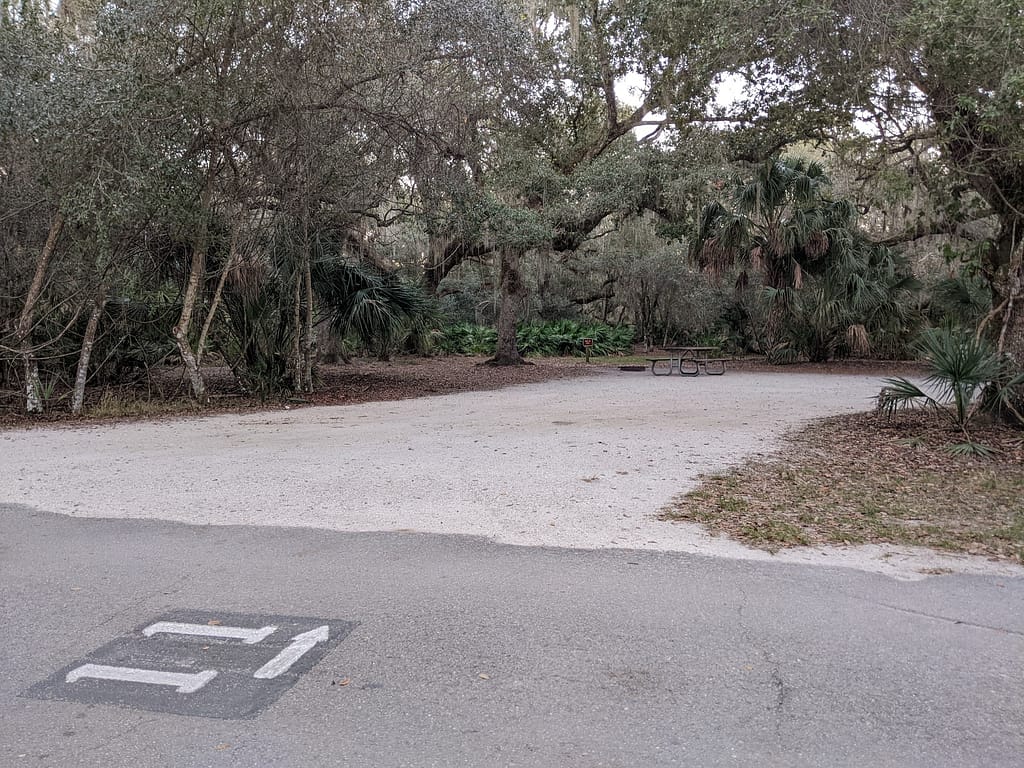
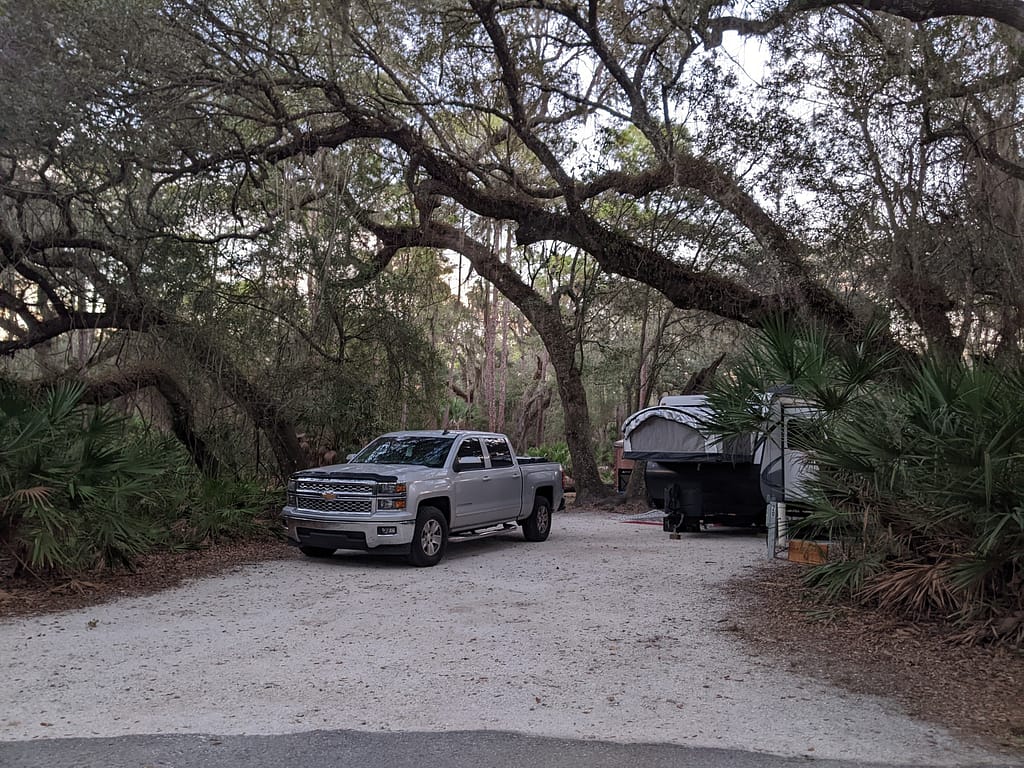
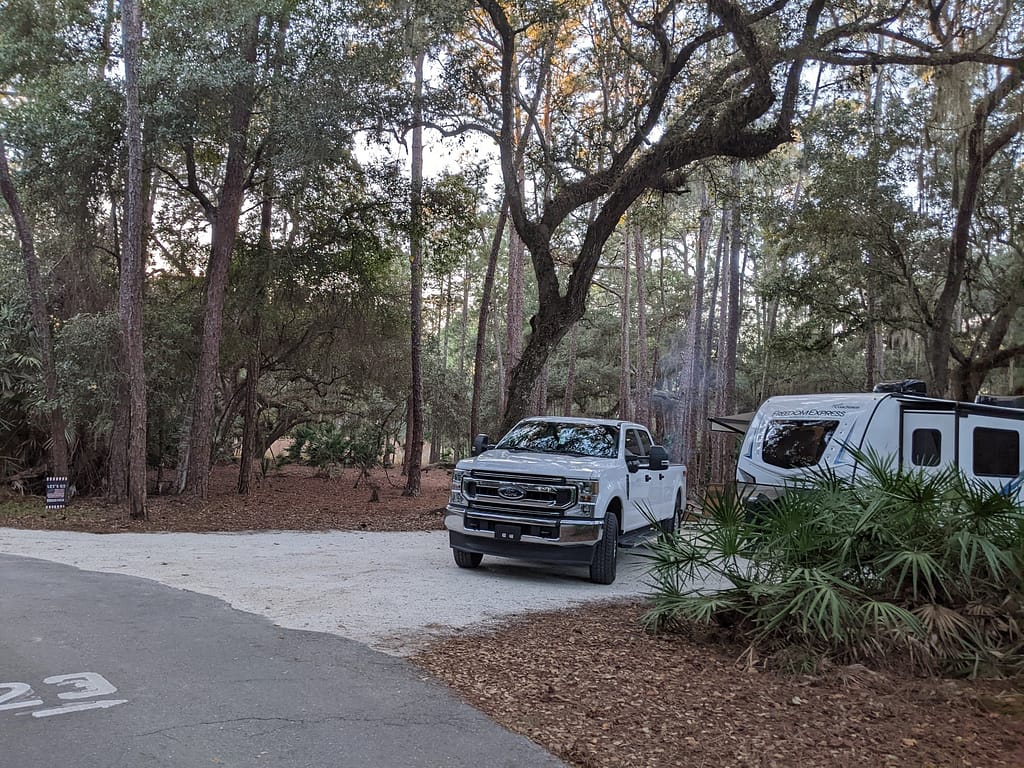
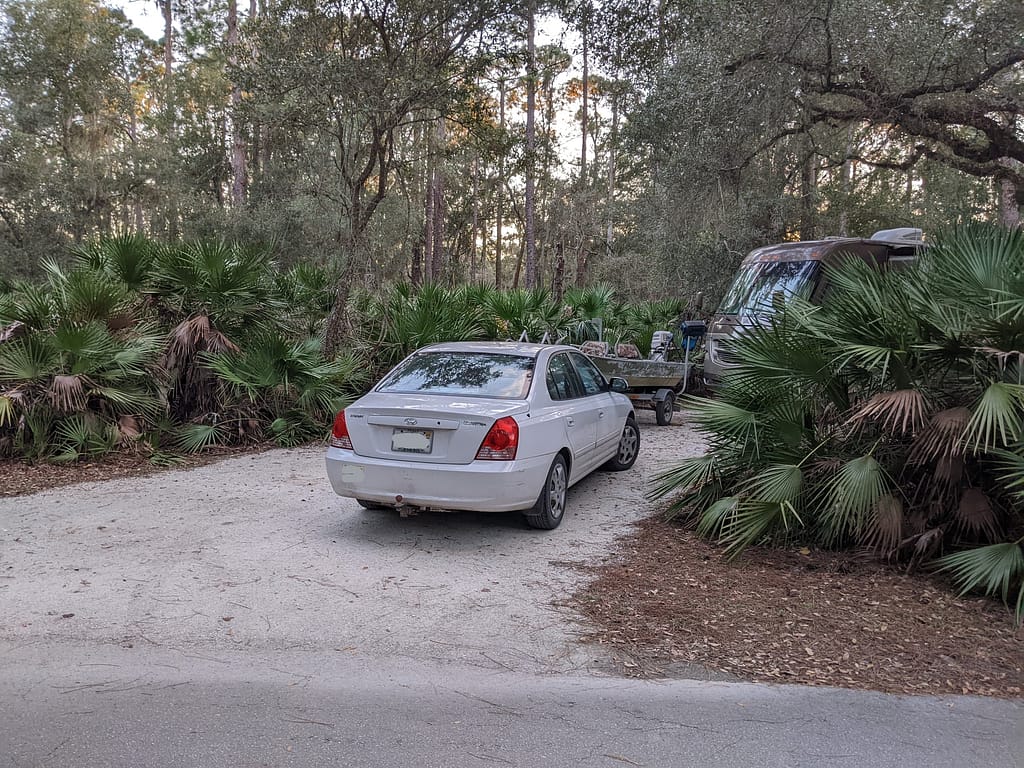
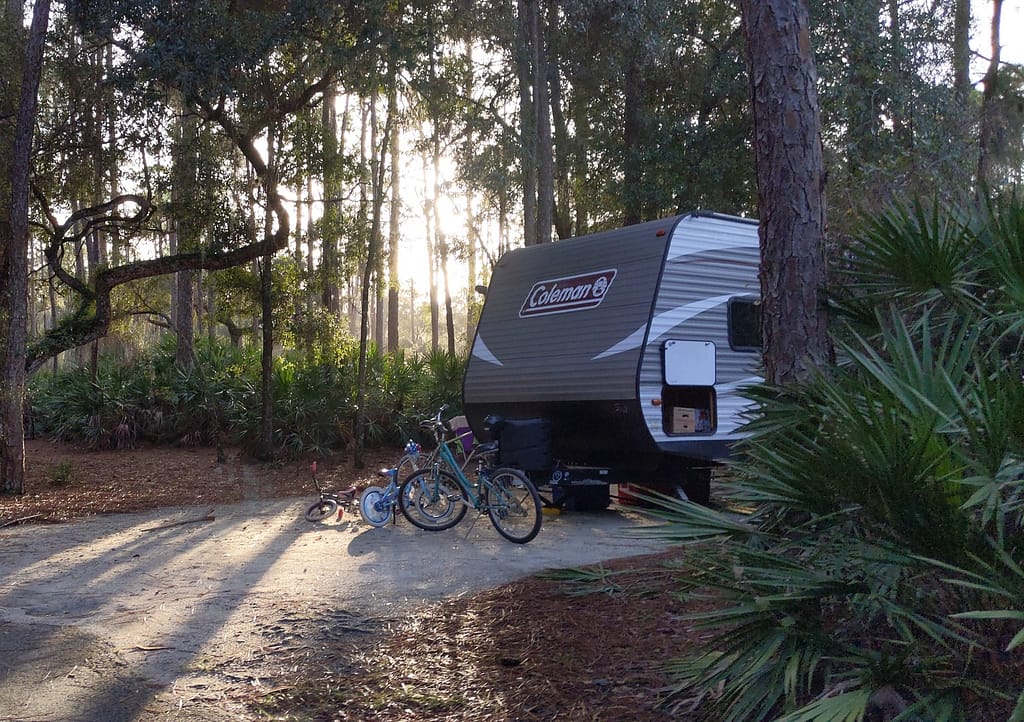
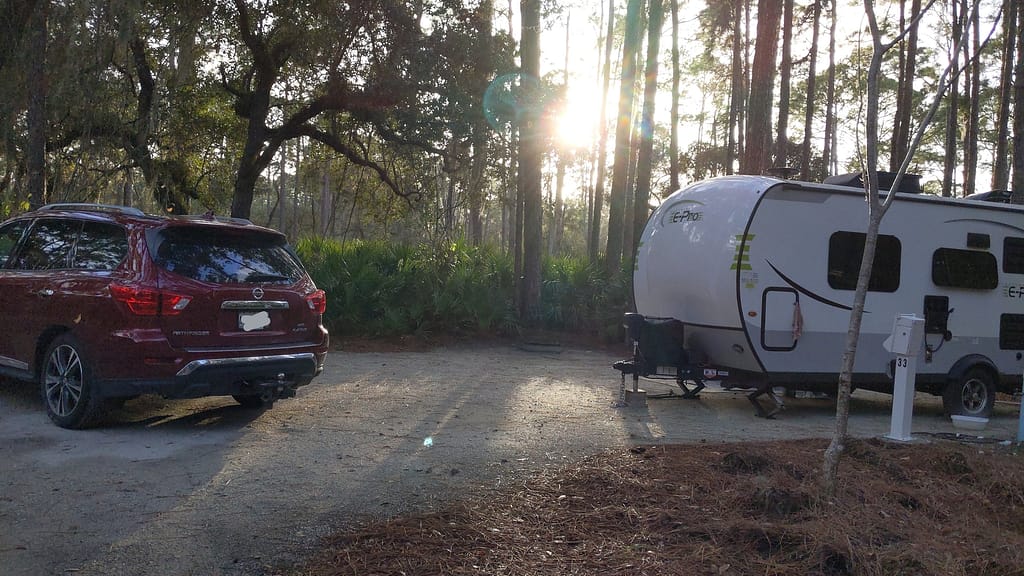
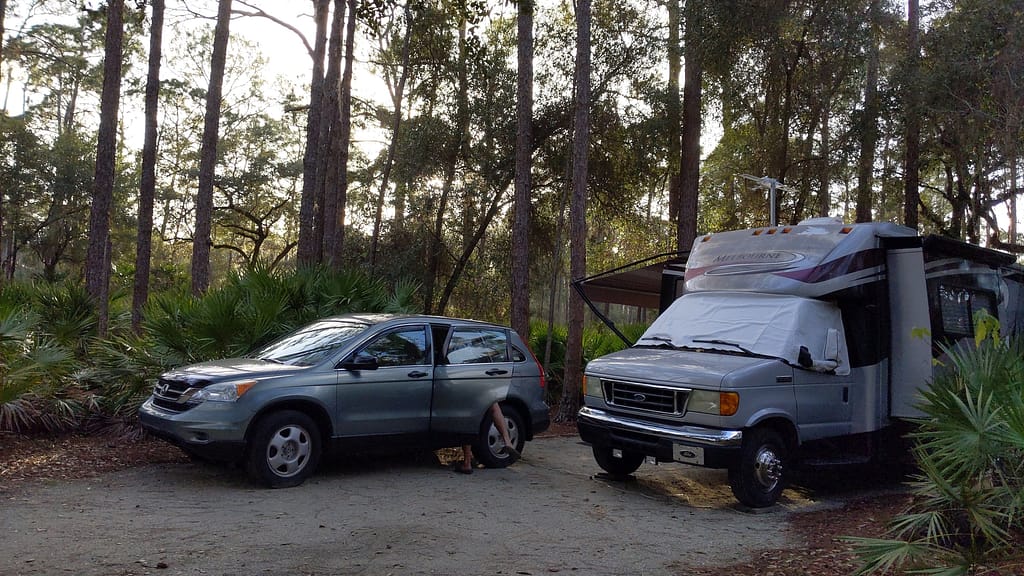
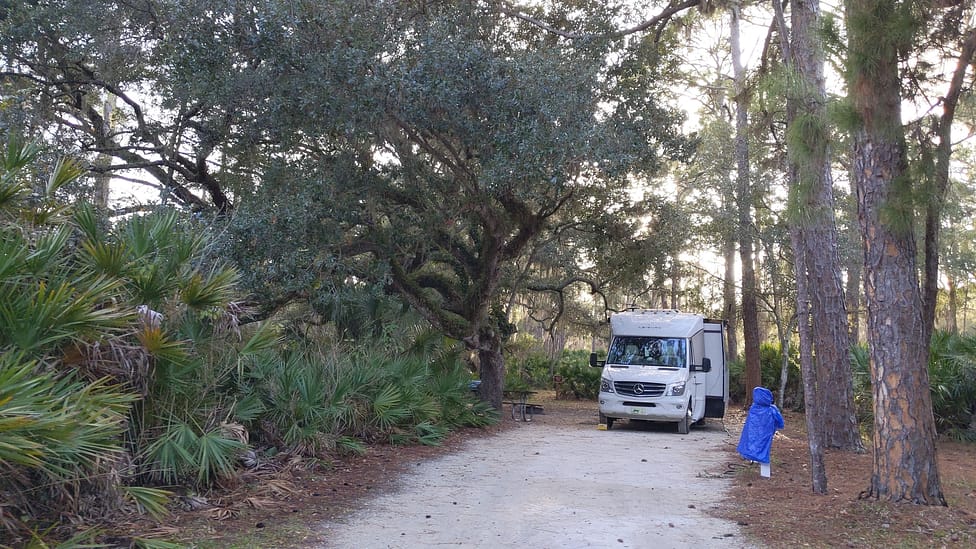
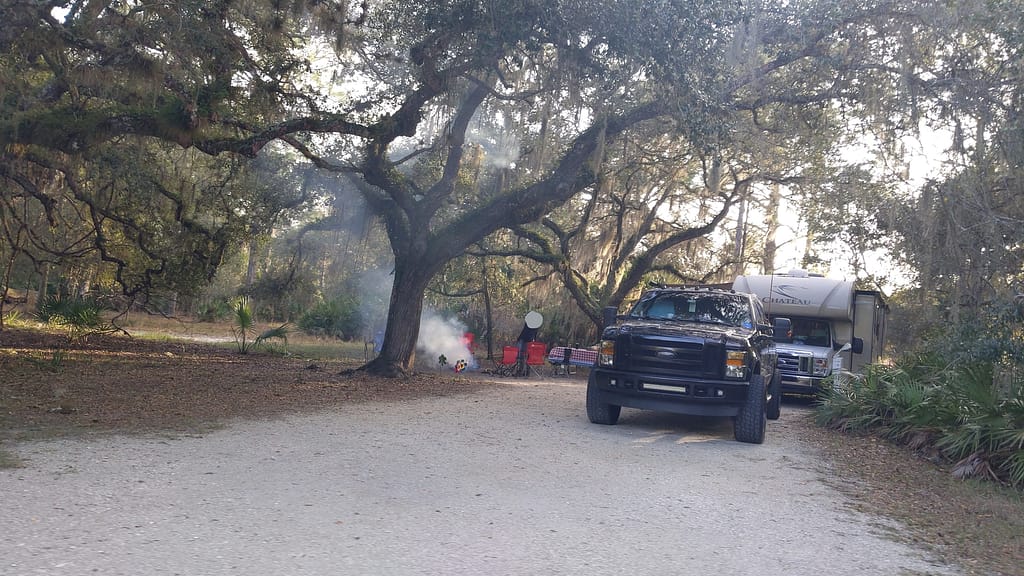
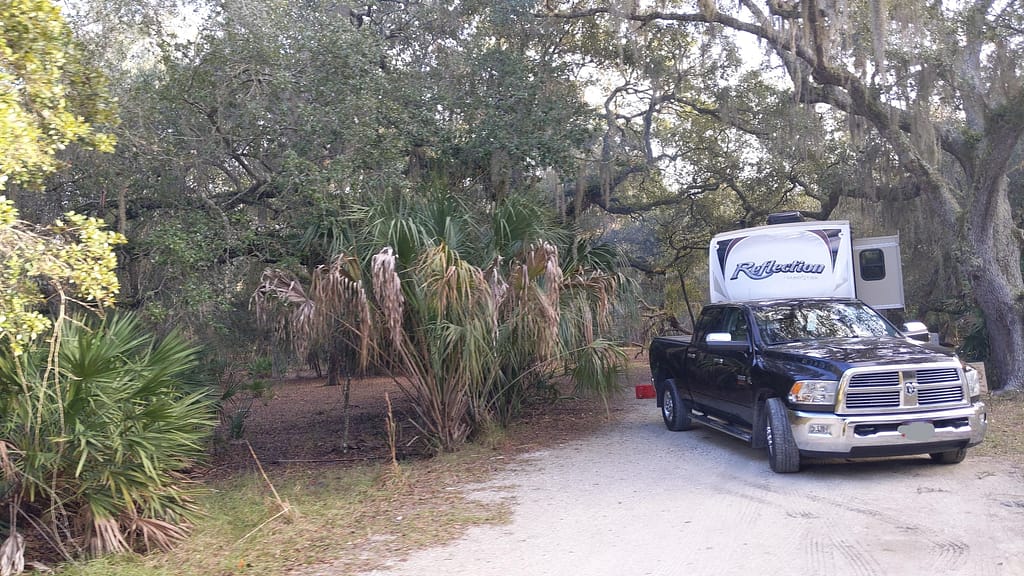
I did not get photos of the other sites, but here are some of my other notes:
- Site 45 – Not as private due to low vegetation not blocking the view of the neighboring site
- Site 48 – Beautiful shady oaks, a bit of a tighter fit, but lots of space in back
- Site 46 – Accessible, paved pad, but some maneuvering to get in as it is a bit narrow
- Site 47 – Long and spacious in the back, lots of shade and privacy
- Site 56 – Beautiful vegetation, deep, and lots of shade
- Site 58 – Not very private, but spacious in the back
- Site 59 – Not a pull-through, but seems like one. Not private as it opens towards the road.
Other campground considerations
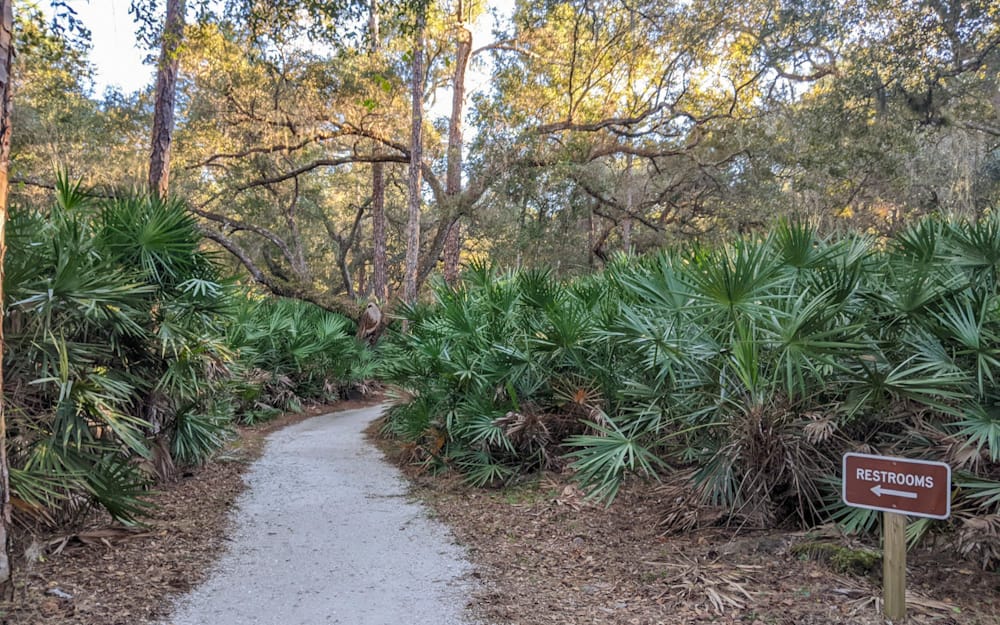
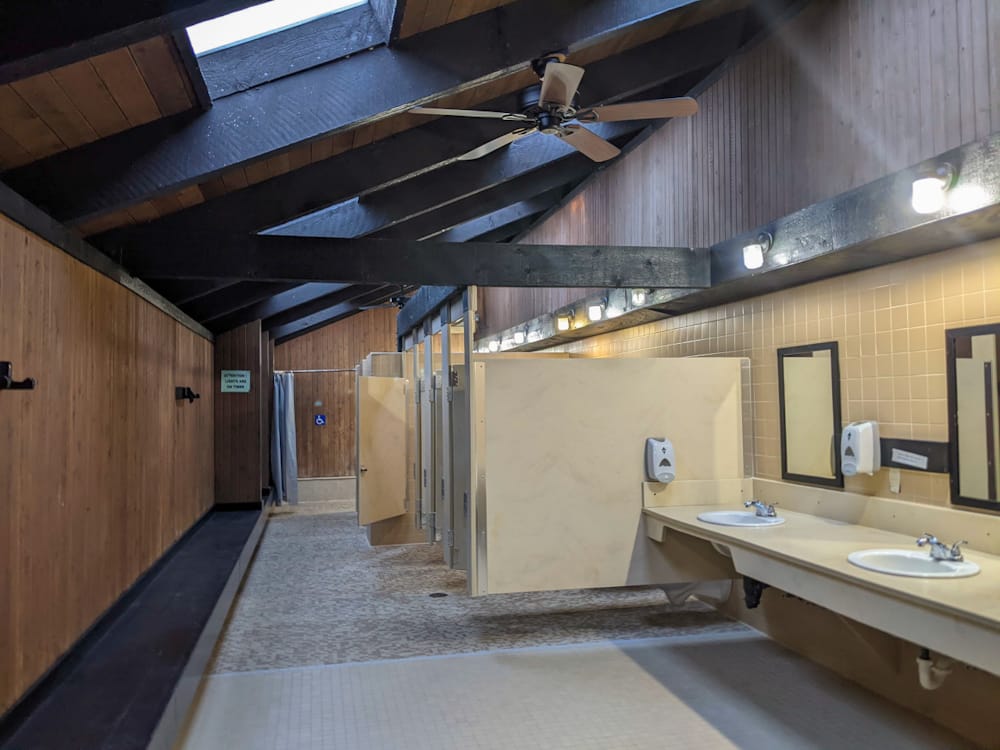
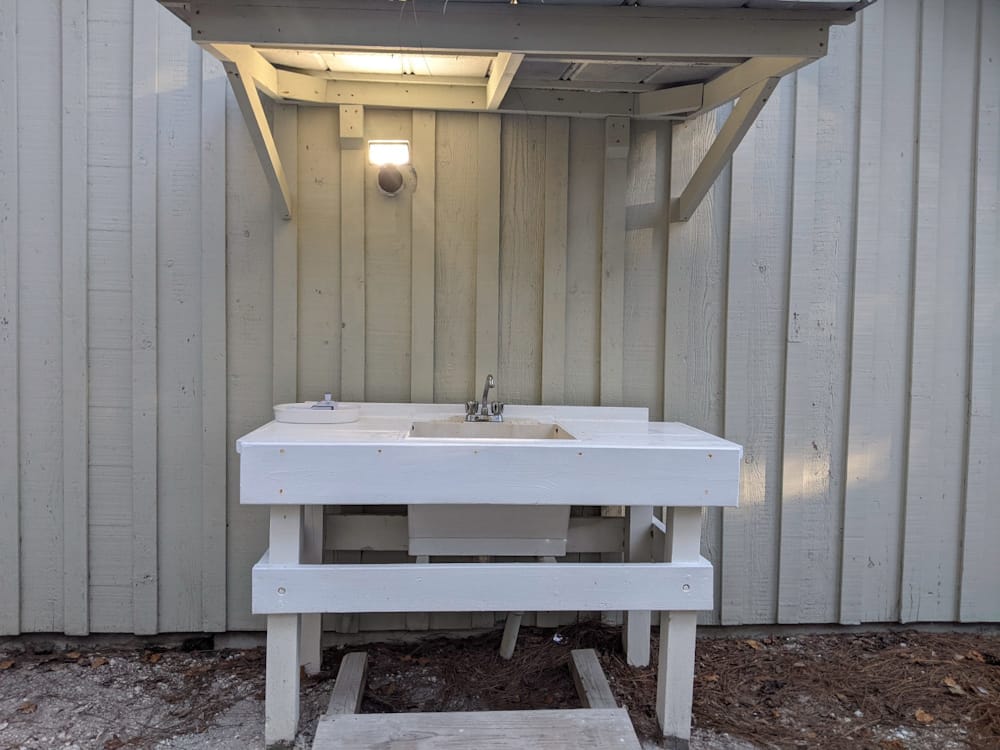
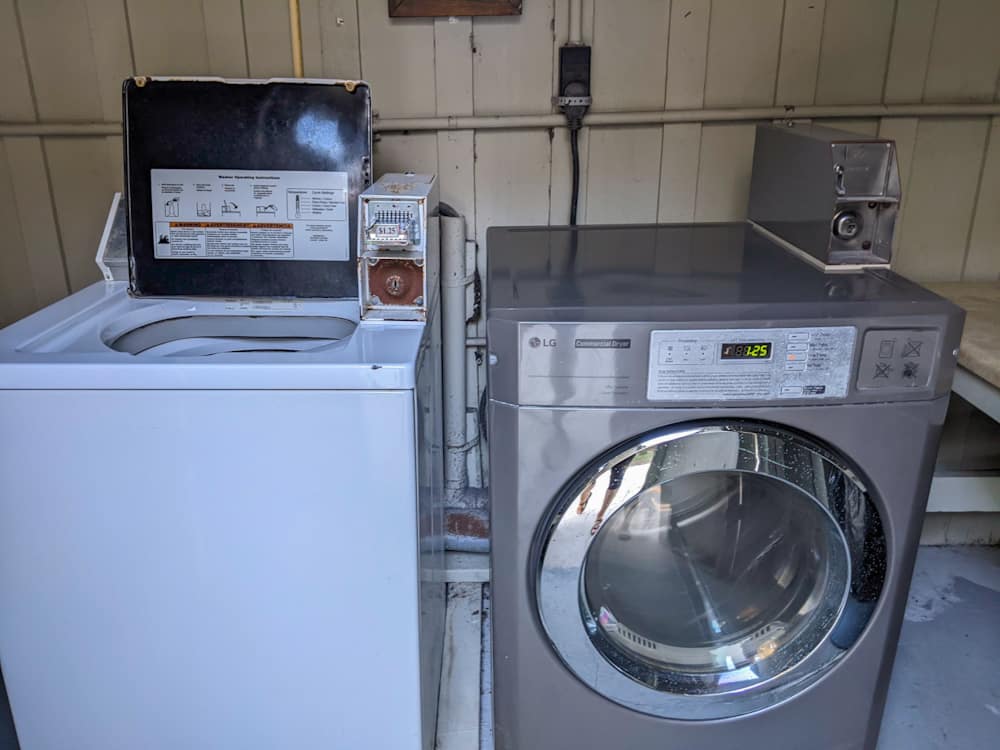
- Bathhouses – There is a single bathhouse in each loop. The water pressure is decent in the showers, and the hot water is quite adequate for bathing.
- Laundry – Both bathhouses feature an outside shed with a washer and dryer.
- Dishwashing – The back side of the bathhouses includes a large sink that is used for dishwashing.
- Dump stations – Just before the loops of the campground you can find the dump station. This dump station is set up with a single lane, and it is well laid out. There is a hose for flushing your equipment, and there is also a small trash can where you can throw away your gloves or any other last-minute trash.
- Trash and recycling – Two large dumpsters are available for waste disposal, as well as several recycling containers. You’ll find them along the road, between the two camping loops.
- Cell Service – The cell service was good for AT&T, Verizon. T-Mobile/Sprint was a bit more spotty, but still enough for communication. I was able to easily use my Verizon MiFi for remote work while staying in the park.
- Swimming – Swimming is not allowed in Lake Kissimmee State Park, so there are no places to cool down in this park. Make sure you take the necessary precautions to avoid overheating and to stay adequately hydrated. For a swimming lake in Florida, check out Lake Manatee State Park.
- Getting around – There are connector trails for some of the main areas in the park but do keep in mind that this park is large. If you want to be able to get around faster without having to drive, consider bringing bikes or a golf cart. If you have small children who are not ready to bike on their own, I have some recommendations on bike attachments here.
- Pets – Leashed pets are allowed in Lake Manatee State Park campground, but not in the swimming area.
What to bring
When considering what you should have handy, it depends on what your plans are. Below are some ideas to consider to make your stay adventurous and enjoyable, as well as some important items that you should not forget!
- Reef-safe sunblock
- Deet or picaridin bug spray
- Screen room
- Bikes
- Floating bed/mat
- Recreational or inflatable kayaks if you prefer not to rent or rentals are not available
Where to Buy staples and Camping Essentials
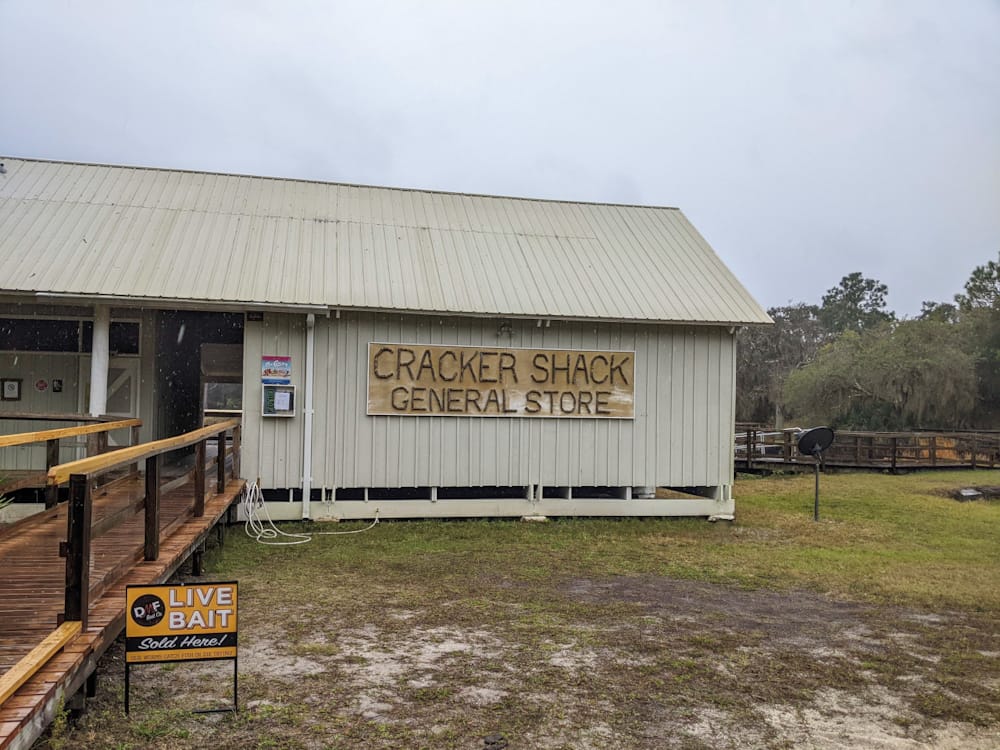
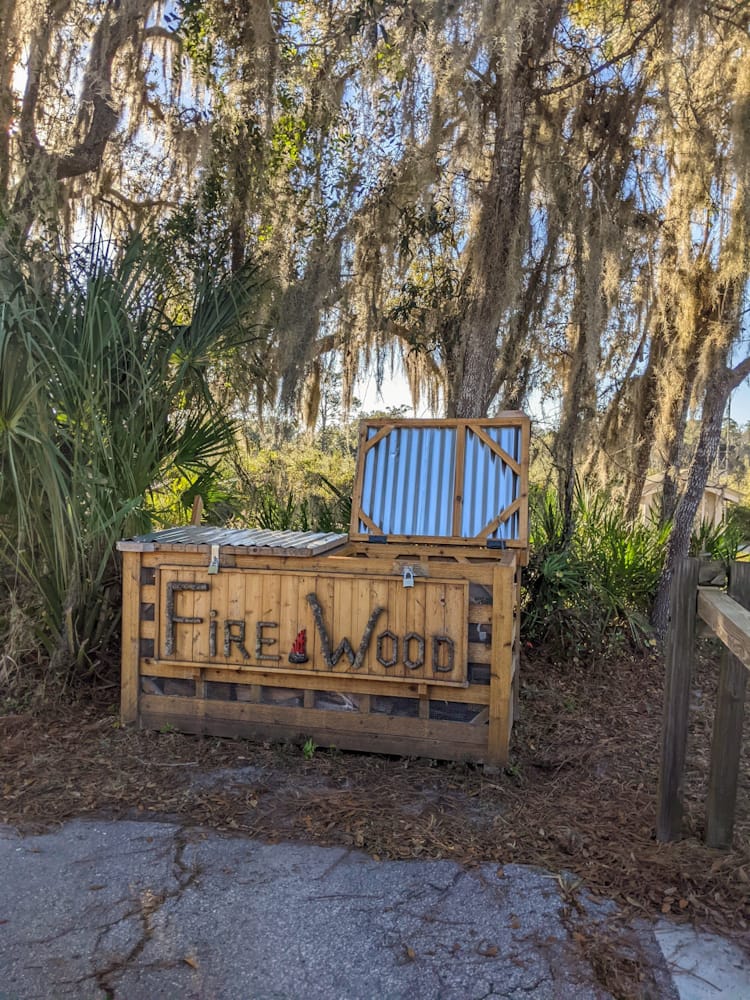
Inside the park, you will find the Cracker Shack Camp Store. It has most of the staples you are likely to need (and forget) for your camping experience, including bug spray, firewood, charcoal, and other essentials. Prices may vary, so be sure to call the park ahead of time if you are planning on buying a firewood bundle.
If you need more than the essentials, the nearest town with decent stores and restaurants is Lake Wales, which is about 25 minutes away.
You should receive this information when you check in, but here you can also download this PDF with information about the Cracker Shack, rentals, and restaurants nearby.
Final Thoughts
I have to say that we were quite amazed at what a delightful visit we had at Lake Kissimmee State Park. It is not only laid out well and offers a great deal of privacy, but it is also wonderfully full of activities and interesting places to visit.
Besides Cow Camp being a fun learning experience, the park’s quirky wooden signs and totem poles that adorn the roads and trails add to the park’s personality. All of this shows how much care and commitment the staff and volunteers put into this park.
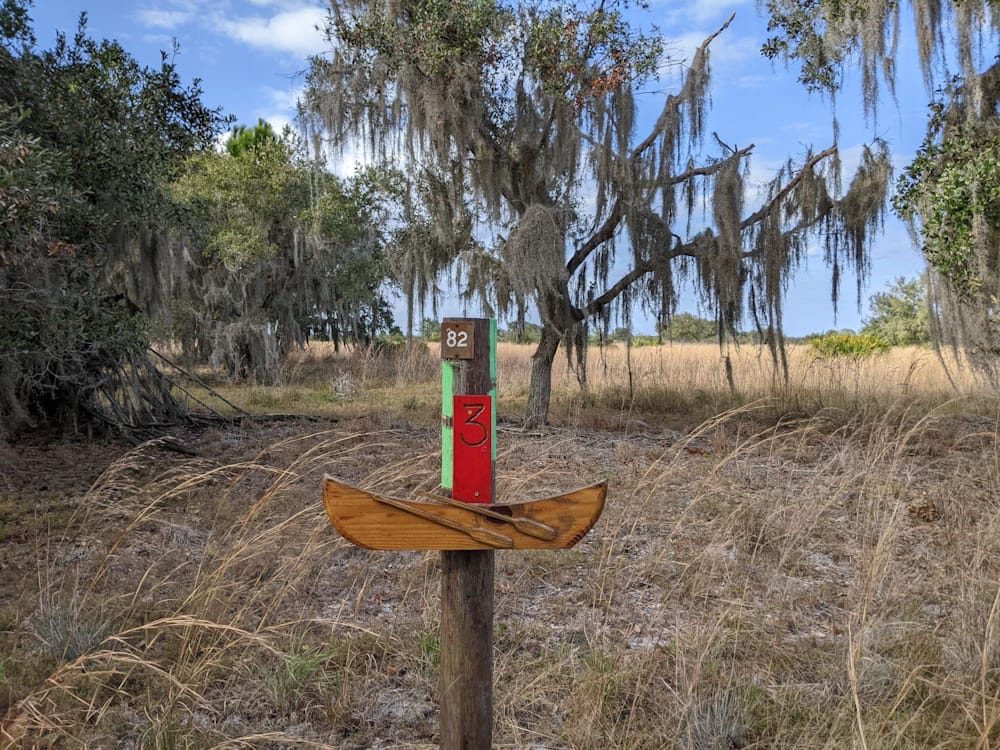
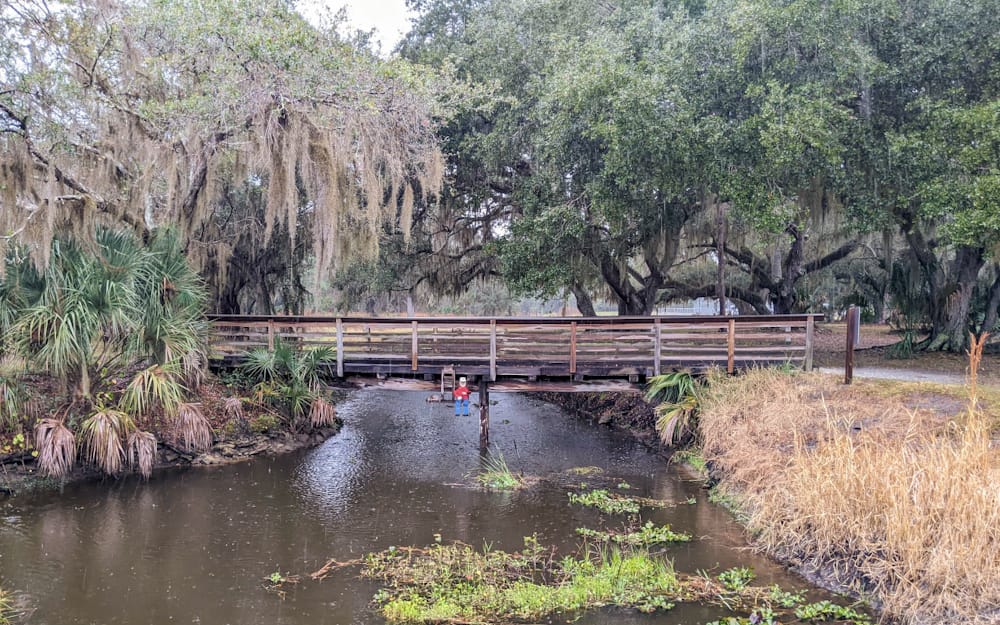
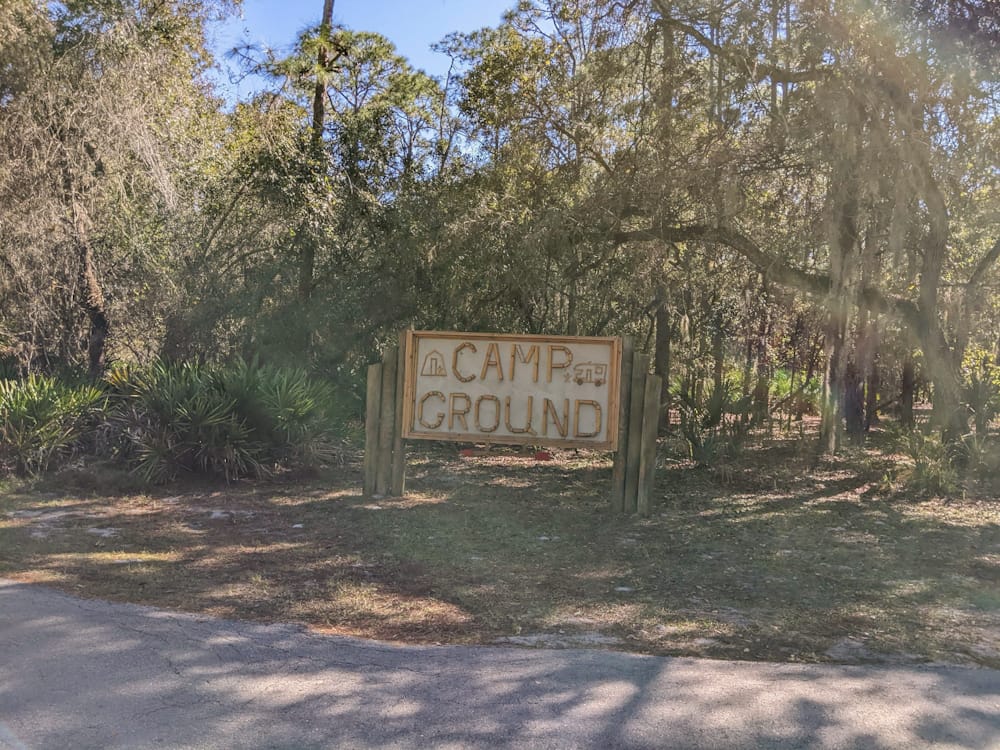
There is no doubt that Lake Kissimmee State Park stands out as one of the top choice campgrounds if you are looking for one that is family-friendly, has plenty of privacy, and has beautiful trails.
Resources
How to Make Reservations
You can book a site up to 11 months in advance and stay up to 14 nights by visiting the new Florida State Park reservation site.
- Lake Kissimmee State Park/FloridaStateParks.org
- Reservations website/FloridaStatePars.org
- Glamping Information/LakeKissimmeeSP.com
- Kayak rentals and other activities/LakeKissimmeeSP.com
RV and Camping Resources
RV Trip Planning
PIN FOR LATER!
